Text
Writing Research Notes: Politics
Estimated Reading Time: 11 minutes

Politics. They are horrible and everyone hates them. That's why I have an MA in International Relations.
Maybe you, like me, have decided to torment yourself by representing politics in your book. You may even be an extreme masochist and decide to have international politics.
Well, firstly, I'm sorry for your loss, and secondly, let's do a birds-eye view of what politics really is and how to represent it in your book.
This isn't perfect and it's not Political Theory 101, just some ideas for political representation geared toward writers. Alas, I cannot cram my entire MA into a post.
It's highly unlikely that you will need to elaborate all of this in your book, unless you are writing a purely political novel.
Please do not put all of this in your book. This is all about worldbuilding and can hum along in the background to create depth without boring everyone to tears.
Remember, you do not need to put every single thing that you create for your world into your book; a lot of it is just to help guide you. A few hints here and there can do a lot of work but not overwhelm the reader with things they don't care about.
And if you are writing a purely political novel, I would hope you would not need this little overview.
Basic theories of politics
Politics is, at its very essence, about balances and transfers of power.
This is true of every political system; the power is just distributed in different ways.
I know Wikipedia's not an academic resource, but this page lists all the many types of government structures to give you an overview of possible systems to use. Many of these can be mixed and matched; for example, you can have a representative democratic system that also has a monarch as a figurehead, like Great Britain.
Or you can have a "shadow" theocracy where a religious community has the greatest influence over government, even as the government claims to be a republic with representation from each region of the country.
Power shifts can come from a variety of sources, both internal and external.
If you're looking at international relations, the power balance inside one country is easily impacted by the balances in other countries, especially if that other country has greater influence.
For example, assume one government has decided to wage war against another country, but they're getting their asses kicked. Because war is expensive and people may have had to send their beloved children off to fight in another country, a government that can't get the job done quickly and easily is very vulnerable to a popular uprising.
Revolutions can also be contagious, even in an era without social media. If a neighboring country has an uprising, unless all countries are totally cut off from one another, citizens of other countries will see what's happening and take a good hard look at their own conditions. Then they may overthrow their own government and look to examples of others nearby to see what to do next.
Political decisions are about satisficing.
Satisficing means choosing the most optimal solution from an array of choices, most of which will involve some loss. No solution is perfect, and all require sacrifice.
A good leader must decide how much loss they are willing to take and what will lead to the least amount of harm for their people.
And what appears to be the optimal solution may have unforeseen side effects that could cause even greater harm.
For example, appeasing an aggressive nation right now might stop potential war, but it could also allow the enemy to become emboldened and strike later with greater force.
Government Systems
Government systems represent the history of a nation as much as the present.
Much as it would be fantastic if government systems kept up with the times cough cough America cough cough, in many ways, they are a time capsule of what a country used to be rather than what it is now.
This is because most governments have checks and balances in place to prevent rapid change and protect the equilibrium of the system; otherwise, they are vulnerable to coups and can be wiped away in an instant.
They also grow out of certain necessities and are shaped by their culture. So, for example, in my own world, Breme is a republic that has representatives from the different provinces and the tribespeople that make up part of the country. This is because the country started as a collection of disparate tribes that were forced out of their homeland and had to coexist in the smaller space they now controlled.
Tribal leaders would meet to discuss the welfare of their tribes and, as the centuries passed, this coalesced into a large council with sorta-representative figureheads for each area of the country.
Geography also plays a role in a government system.
Smaller countries are more likely to have a highly centralized power system because, well, it's easier and simpler. When most of the populace is close to the capital, you don't need a lot of goverment mouthpieces spread out through the region, and it wastes precious money and resources to do so.
A large, spread-out country is going to need a more elaborate system of government representatives in each region, which is how you get republics with intricate local governments.
Large-scale representative and democratic governments are a relatively new invention.
Now, it is true that there are small historical societies, mostly tribes, that did practice forms of democracy, but these were small.
Democracy as we know it now has only come about in the last 300ish years. So if you have a medieval society, it's very unlikely that you'd have a democracy.
If you want to figure out how to make it that work in a fantasy novel, go off, but it might be challenging depending on the history of your world; for example, is most of society functionally illiterate? Very unlikely that you'll have powerful people willing to let the masses participate.
International Relations
A good international system relies on sovereignty.
Note that I say a good international system, not necessarily the one that we have in our modern world.
Sovereignty basically means that each government has the right to self-administer within reason. Of course, if they turn machine guns on their citizens and violate human rights, then it is a moral imperative to intervene.
If they are not doing that, then other countries (theoretically) do not have the right to force regime change just because they don't like it. This does not mean that certain countries cough cough America cough cough don't do that, simply that they are not supposed to.
International relations requires a blend of cooperation, aggression, and deterrence.
Even in a system where it appears that the girls are fightingggg, there is still some cooperation going on with someone because warfare is expensive. (We will put aside the United States post WWII for the moment because that is a whole other issue.)
When two countries have no diplomatic relations, they are still cooperating with someone to get messages through. We see that with the US and North Korea; the US relies on Sweden and some other states as a mediator when dealing with North Korea. There's many of these triangulations that occur, particularly in regions with a lot of hostility.
A well-functioning country must decide when to use the carrot, when to use the stick, and when to sit back and hope no one bombs them during tense situations. The world is an interconnected system, so it behooves a government to improve trade relations, protect their borders, and ensure no one invades their sovereignty.
Governments use both hard and soft power to control their own people and shift international balances in their favor.
Hard power is exactly what you would expect: your ability to bankrupt another country or bomb them into oblivion. That includes some of the following elements.
Police forces
Military investments
Blockades or outright warfare
Provision or withdrawal of trade agreements
Trade embargoes
Directly manipulating the economic system of another country through investments or removal of investments
Soft power is about persuasion rather than coercion: building a positive reputation for your country and making people want to work with you. This often involves cultural exchanges, media, and "philanthropy" on behalf of the country, such as the following.
Entertainment industries, including literature, movies, and music
State-funded study abroad scholarships (both inside and outside the country)
Tourism
Work visas
Cultural exchanges, like state-funded dance troops traveling the world
Philanthropy
Conferences and consortiums
In the Olden Dayes, marriages between nobles or royals to create greater political alliances
While hard power is more obvious, and therefore more discussed, soft power is more diffuse and more prevalent.
For example, what do you think of when you think about China? It's probably not their government system unless you live there or have been directly impacted by their political choices. You probably think of Chinese food, ancient culture, dances, pretty bridges, the Great Wall, etc. Those are the first things to come to mind, even if you know more about the country.
That's a conscious choice by the Chinese government to fund certain cultural schemes, influencing how people see their country and what they associate with it.
Every country does this. The Nordic countries represent themselves as a clean, peace-loving people; Japan represents itself as a forward-thinking yet traditional society that has massive technological innovation. And those things can certainly be true, but they have also been pushed as the narrative for said country, with more unpleasant things swept under the rug.
Soft power has become much more difficult for countries to manage now in the world of social media, but it still holds an important role, and it certainly would be more powerful in certain eras, particularly before people could instantly get information from anywhere in the world on their phones.
Politics Gone Bad
Political theory is based on rational actors, which does not always reflect reality.
If you've ever wondered why Trump took everyone by surprise, it's because of this idea of rational actors. This is an almost delusionally optimistic belief that every politician or government will do things that are based on pragmatic decision-making.
These decisions may not necessarily be the best ones, but with a rational actor, those decisions will be reasonable and based on a solid thought processs.
The underpinnings of this decision could be self-interest on the part of the leader, national defense, expansionism, public welfare, or staying neutral during a war. But it's a reasonable decision based on the information the leader had at the time.
As such, when an irrational actor joins the system, this assumption goes out the window, and now no one knows what the hell to do anymore. Dangerous and scary.
Alas, I think we're going to see far more irrational actors with the creeping age of politicians, especially in the United States. Someone with dementia is not going to make rational decisions because they can't anymore.
What a government claims to be and what it really is are not always the same thing.
The label slapped onto a given government system does not always reflect how power actually works in the country. This can be due for a variety of reasons:
Rampant (and sometimes government-sanctioned) corruption has overtaken the system
The goverment was set up in such a way that it cannot be easily changed, leading to archaic structures that no longer reflect reality
Migration patterns or demographic changes mean that the government no longer reflects its populace
In an autocracy, an uprising has made the current leader unpopular and though they continue to cling to power, the real political work is done beyond their purview
The government was made to reflect an ideal that is not being played out in the actual system
There are more potential reasons, of course. You have a lot to play around with here.
Corruption is present in all governments; it is the form and prevalence that matters.
Governments are made of people, and people can be shitty. A good government has systems in place to equalize power and prevent bad actors from taking over, but it can never fully eradicate corruption.
Situations outside of government, such as poverty or famine, can also worsen corruption even in systems that have robust anti-corruption safeguards.
The Paradox of Intolerance is a crucial consideration for governments and politicians.
Essentially, the Paradox of Intolerance says that you cannot tolerate intolerance and must do what you can to eliminate it if you want a well-functioning system that benefits all constituents.
As soon as you get lazy, intolerant people will begin to infiltrate and make decisions to the detriment of the populace.
This has gotten hideously long now, so I'll shut myself up because I could go on for several more pages of this palaver. I hope this helped, and if you have any questions, you can ask in the replies to this post and I'll do my best to answer.
I've created a masterlist of writing resources that you can peruse at your leisure, all for free.
The posts I write can sometimes take me hours - they're always intricate, always thoughtful. This one took me about 3 hours to write.
I do this as a labor of love for the writing community, sharing what I have learned from almost 15 years of creative writing.
However, if you'd like to support me, maybe you'll consider buying my book?
At $0.99, that's about 9 cents for each minute you spent reading this post.
9 Years Yearning is a gay coming-of-age romance set in a fantasy world. It follows Uileac Korviridi, a young soldier training at the War Academy. His primary motivations are honoring the memory of his late parents, protecting his little sister Cerie, and becoming a top-notch soldier.
However, there's a problem: Orrinir Relickim, a rough and tough fellow pupil who just can't seem to leave Uileac alone.
The book features poetry, descriptions of a beautiful country inspired by Mongolia, and a whole lot of tsundere vibes.
You can also check it out on Goodreads for a list of expanded distribution. If you loved it, be sure to preorder Pride Before a Fall, arriving January 1, 2025!
If you do purchase my book, don't forget to leave a review!
Reviews are vital for visibility on Amazon and help to support indie authors like me. Whenever you love a book, be sure to let the author know! It's much appreciated.
#creative writing#writing resources#writing tips#writing advice#writing research#writing community#writeblr#fiction writing#writing help#writers of tumblr
9 notes
·
View notes
Text

[🔗Building a Diverse Culture] [🔗Elements of culture] [🔗Cultural Iceberg]
🗺️Geographic Distribution
Why knowing where your culture is important:
Enviroment ➡️ Materials from the enviroment ➡️ affect their clothes, food, weapons etc.
Enviroment ➡️ Certain resources are limited ➡️ plays into their values
Areas, planets where the culture is primarily found
Migration patterns throughout the world
Influence of the environment on their everyday lives
🍵 Values, Beliefs and Traditions
Values and Beliefs:
Core values and principles that guide the culture's behavior and decision-making
Moral and ethical codes that shape their interactions with other cultures and their environment.
Beliefs about the universe, spirituality, the afterlife, and the nature of existence.
Customs and Traditions:
Rituals, ceremonies, and traditions that are significant to the culture's culture
Celebrations, Festivals, holidays, or coming-of-age rituals.
Customs related to birth, marriage, death
Belief Systems and Religion:
Religious or spiritual beliefs practiced by the culture
Deities mythologies and legends
Rituals, ceremonies connected to their faith
sacred sites
👯Relationship and Communication
Social Structures:
Hierarchies and social classes within the culture
Systems of governance, including monarchies, democracies, councils, or communal decision-making. [see government template]
Gender roles, family structures
Interactions between different generations or age groups
Language and Communication:
Unique language(s) spoken by the culture
Dialects and variations within the language
Non-verbal communication, gestures
Written scripts, alphabets, or symbolic systems used for recording and transmitting knowledge.
Relationships and Interactions:
Protocols and etiquette for social interactions, greetings, and forms of address.
Values placed on community, cooperation, or individualism.
Attitudes towards outsiders, including hospitality, suspicion, or xenophobia.
Education, training, and knowledge transmission practices
🪐History and Origins
Mythology or creation stories related to the culture
Historical events that shaped their culture and identity
Moments of triumph, struggle, or transformation in their history.
Conflicts, wars, or alliances that influenced their development and interactions with other Cultures.
How do they prerve the past? (Art, oral traditions, written texts, artifacts, monuments ?)
Are there any guardians of historical knowledge? (historians, scholars?)
Historical Figures and Heroes:
Notable individuals who played pivotal roles in their history
Legendary figures of inspiration within their culture.
Stories and folklore surrounding these historical figures and their impact on the culture
Cultural Revivals (If there was any)
Periods of cultural revivalthat brought about significant artistic or intellectual growth
Factors that sparked these revivals, like social movements, political changes, natural disasters or technological advancements.
How much of these revivals are still affecting them today?
Where do they keep their cultural items?
Interactions with Other Ethnicities/Cultures:
Relations with other culture in the past (conflict, alliances, trade, etc.)
Cultural exchange, assimilation, or integration with other groups
Prejudices, stereotypes, or tensions between different culture bleeding from past events
Are they welcoming?
🎨Art and Architecture
Arts and Entertainment:
Describe their forms of artistic expressions: visual arts, music, dance, storytelling, theater, etc.
Cultural appreciation for literature, poetry, oral histories.
Clothing and Fashion:
Traditional clothing styles and attires specific to the culture, fashion trends
Materials, colors, or patterns commonly used in their garments
Dresscode, Clothing related to social status, ceremonies, events (symbolic accesories, wedding gown, mourning attires, etc.)
Symbolism or cultural significance of specific garments and accessories
Architecture and Built Environment:
Unique architectural styles, construction materials, design principles.
Landmarks, sacred sites, structures of cultural importance.
Adaptations to their homeworld's environment ,technological advancements in their architecture
🎙️ Economics and Technology
Economic Systems:
Modes of production, distribution, and trade
Economic practices (bartering, currency, communal sharing)
Attitudes (or even predujices) towards wealth, resources, material possessions.
Economic activities and industries prominent
Currency, barter systems
Technology and Advancements:
Technological prowess specific advancements
How their technology shapes their way of life and cultural practices
Interaction between traditional and advanced technologies
🍱 Food
Traditional dishes, cooking techniques, culinary customs
Staple foods, spices, ingredients
Rituals and etiquette associated with food preparation, sharing, and dining
Sacred abd holiday dishes.
Impact of environmental conditions on their culinary practices
🏦 Law and Leadership
Political systems or governing structures within the culture
Leadership roles, decision-making processes, and power dynamics
Forms of governance (monarchy, democracy, tribal council, etc.)
Conflict Resolution and Justice:
Methods of conflict resolution
legal systems
Cultural attitudes towards justice, punishment, and rehabilitation.
Traditional systems of governance, decision-making in matters of conflict
162 notes
·
View notes
Text
Fantasy Guide to Royal Households and How they Work
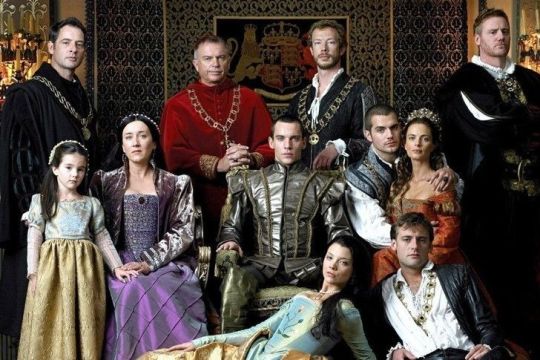
When I say Households, I mean the entourage that follows around the royal family. The household went everywhere with them to care for their needs from the people who would empty their chamber pots to their noble companions. Most royal households are basically the same as noble ones, only on grander scale. Every royal had a household and an entourage as well as every noble at court.
Palace Personnel ~ The Commons

The commons were an intregal part of every household. They made up perhaps 80% of the work force. Royal courts were often on the road and never spent more than a few months at every palace. The court was constantly moving. Some positions were not permanent, meaning certain servants did not travel with the court because they were employed at the palace only. They would be paid by the Monarch's paymaster.
Scullion: The scullion was a relatively easy position to fill so they were often changed as the court went from palace to palace. They would be responsible for scrubbing and cleaning the servants quarters and the kitchens. They would scrub floors with lye, scour pots with sand, sweep put the fireplace and clean up after the other servants. They were the first to rise in a castle and tasked to light all the fires in the kitchens. Scullions would just be employed to the palace and serve a multitude of chambers
Laundress: The laundress was responsible for the cleaning of anything made of fabric in the household. Since they are handling unmentionables, they knew what happened behind closed bedchamber doors. They knew when the King visited the Queen or hadn't, they knew when marriages were consummated or not and they knew when the Queen and royal women were not pregnant. They often sold secrets to pad their pockets. Laundresses might be permanent staff but sometimes not.
Minstrels: The minstrel was a commoner hired to play an instrument or sing for the entertainment of the royal. A royal might staff a few at a time but they would always have one on hand. The minstrel would likely come with their masters as they travelled. The minstrel might serve the main royal household but a royal might retain their own.
Cook: The cook was one of the most important servants in the household. They would have the task of overseeing the running of the kitchens and keeping supplies in order. They would likely be on call at all times. Henry VIII's cook was often woken in the night because his royal master wanted a midnight snack. The cook was a valued member of the household and would have been highly sought after if they were a very skilled cook. They would have travelled with the joint. Cooks were apart of the greater royal household but often royals retained private cooks for their own use.
Maidservant: The maidservant cleans the castle. She would sweep the floors, scrub them, empty the chamberpots, get rid of the ashes from the fire and ready the fire for later. She would make up the bed or strip it for the laundresses. She would wash anything that needed washing including furniture and ornaments. She was likely not a travelling servant and would be strictly employed at a single palace.
Jester: The jester was the hired entertainer. Working under the master of revels, the jester had the daunting task of making the monarch and their family laugh. They would tell jokes, tell stories, cause havoc in the court for laughs and lighten the mood. The most successful jester of all time was Will Somers, jester to Henry VIII. Will broke bad news to the infamously bad tempered monarch and got away with things that would have sent others to the block. Will survived most of Henry's reign, his head intact. Jesters would be apart of the main household though each royal might have one of their own.
Positions within the Royal Household ~ Noble
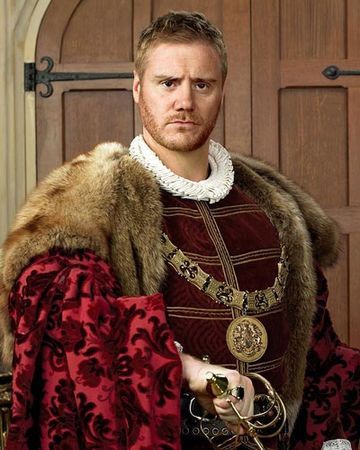
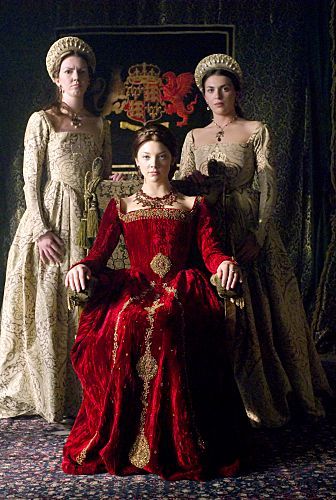
Nobility were always welcomed at court. They eat at court, slept at court and were cared for by the monarch. Some nobles had to sing for their supper and most were hired as royal servants. They weren't exactly scrubbing floors and would be paid handsomely with land that would generate wealth for them
The Steward/Seneschal: This person was the head of the royal's staff. They would have the task of running the lands and servants their master or mistress. The steward served as a backup and assistant in all the tasks even representing their master or mistress when they were unavailable. Would be a high ranking noble. Each royal household would have them.
Treasurer of the Household: The treasurer was the accountant and pay master. They would be in charge of ensuring debts were settled, wages were paid and the household was running within the budget. This was a coveted position because it gave the treasurer insight into the financial situations of the royals. Such info was wroth its weight in gold. Each royal would have one.
Usher: The Gentleman Usher would be in charge of escorting guests into the royal chambers and into the royal presence. They would act as a go between their royal master/mistress and the guest often going back and forth with messages. It was just as coveted as the position of chamberlain but with less responsibilities.
Master of Horse: The Master of Horse was in charge of seeing to the horses of their master. They would oversee the grooms or the stableboy/hands who were employed at the stables to actually care for the horses. The master of horse would ensure that the stables were in order and the horses were up to parr in order to bear royalty across the kingdom. Each royal would have one but there would a main one who acted as overseer.
Master of the Wardrobe/Mistress of the Robes: These are the nobility who are employed to look after the clothes of the royal they serve. This would mainly involve a managerial position, overseeing the inventory of the royal wardrobe (a warehouse like building that housed the clothing) and placing orders for new clothes. It was a tidy job that rarely involved getting the hands dirty. Each royal would have one.
Chamberlain/Valet: The chamberlain is employed to look after the Lord's bedchamber. This was the most sought out position as they effectively were the gateway into the royal presence. Their main task was making sure their boss was comfortable and happy. Could be a well born commoner or a noble. Each royal would have one.
The Page: All royal households had pages. They would be a young noble boy about seven years old sent to their royal master. He would be in charge of tidying up after the lord, carrying messages to other servants and occupants of the castle and serving him at meals. Unlike others on the list, the page would not be paid. His experience was his payment as he would learn the running of a court and how to be courtier. Each royal would have one.
Squires: Squires were like pages though they only served the men. They would accompany their royal master to battle, look after his armour and mail, ensure that his lord's horse was saddled, caring for their master's weapons. The squire would always be a young nobleman on the cusp of becoming a knight.
Governess: The governess is a noblewoman woman employed to oversee the Monarch's children's household. She would be the first teacher a royal child would have and would oversee the nursemaids who would have care of the physical person of the child. She would be appointed when the child was four or five. Notable governesses include Katherine Swynford (wife of John of Gaunt and mother to the Beaufort line), Margaret Pole (wife of Tudor Loyal Sir Richard Pole, sister of the last York heir Edward of Warwick, daughter of George Duke of Clarence and niece to King Edward VI and Richard III), Kat Ashley, Margaret Bryan, Madame de Maintenon and Baroness Lehzen. Most unmarried Princesses retained their governesses while Princes generally outgrew their governesses after they were breeched.
Gentlemen of the Privy Chamber: They were the male companions of a King or Prince, sort of like ladies in waiting but manly. They would accompany the King or Prince everywhere they would go and shared duties with Groom of the Stool (royal toilet paper dispenser) and the Chief Gentleman of the Chamber (overseeing the staff and maintaining the chamber). They would help their master get ready, serve him at the table and organize hunting and games to keep him entertained. Gentlemen and companions where often chosen for their connections as well as their master's own opinion. Henry VIII's gentlemen included: Sir William Compton (ward of Henry VII and heir to rich lands), Sir Henry Norris (the grandson of William Norris who fought with Henry's father at Stroke and a relation to the Yorkists Lovells), Sir Anthony Denny (son of Sir Edmund Denny Baron of the Exchequer) Sir Michael Stanhope (brother in law to Edward Seymour, Duke of Somerset), Charles Brandon (ward of Henry VII and son of Tudor Loyalists)
Ladies in Waiting and Maids in Waiting or Maids of Honour: These are the female attendants to the Queen or Princess. Ladies in Waiting were married while the Maids were unmarried. They would have to attend their mistress wherever she went, help her get ready, keep her chambers in order, write letters for the Queen and maintaining her honour. They were chosen for their connections. Using Katherine of Aragon as an example, her Ladies in Waiting included: Maria de Salinas (daughter of Juan Sancriz de Salinas secretary to Isabella, Princess of Portugal and a Spanish courtier in the service to Katherine's parents, wife of Baron Willoughby de Ersby), Elizabeth Howard (the daughter of Thomas Howard, 2nd Duke of Norfolk, sister to Thomas Howard, 3rd Duke of Norfolk and wife to Thomas Boleyn, ambassador to France), Anne Hastings (daughter of William Hastings, 1st Baron Hastings, wife to George Talbot, Earl of Shrewsbury and Lord Steward.), Agnes Tilney (wife to Thomas Howard, Earl of and 2nd Duke of Norfolk.), Elizabeth Scrope (wife of John de Vere, Earl of Oxford, a loyal Tudor lord), Margaret Scrope (wife of Sir Edmund de la Pole, Earl of Suffolk cousin to the King), Anne Stafford (sister of the Duke of Buckingham, married Sir George Hastings, Earl of Huntington and daughter of Henry Stafford, 2nd Duke of Buckingham (cousin to the King) and Lady Katherine Woodville (sister of King Henry VIII's grandmother and his great aunt by her marriage), Elizabeth Stafford (sister to Anne Stafford wife Robert Radcliffe, Lord Fitzwalter and Earl of Sussex around). Their connections are what got them their places and you can see why they were chosen.
Accommodation
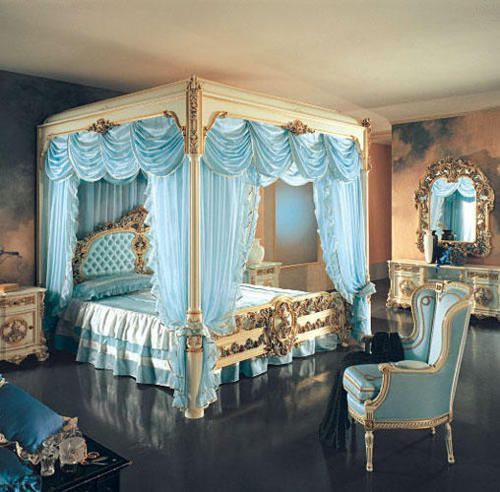
Accommodation can be a difficult thing to sort both as a writer and a steward. You might have a palace of 200+ bedchambers in which you must house a staff of 500-/+, a varying amount of nobles, the royal family (of a varying amount) and their own households. When assigning rooms it is best to think of a Russian nesting doll. Start from the inside and work your way to the outside.
The best rooms go to the monarch, their consort and their children/siblings/parent(s). These chambers would include the bedroom, a drawing room/ common area, a privy, a closet (a small chamber that can be used for prayer or work). They would be furnished with the best cloth, the best candles and whatever furniture brought by the resident since most royal courts travelled from palace to palace. They will also have chambers for their personal servants such as ladies in waiting and grooms.
The second best set of rooms would go to the highest ranking nobles/people in the court. These rooms would be less fancy and a little smaller. These would be given to from titled nobility descending from those of Ducal rank (Dukes/Duchesses) or even members of the council such as Thomas Cromwell in Tudor times.
The next set would be considerably smaller, perhaps minus a closet or a drawing room. Given to lower nobility.
The next level of chambers would be smaller perhaps only the bedroom and a common area given to minor nobles.
The last set of rooms would be small and only hold enough room for a bedroom. Servants would have to sleep on the ground on pallets beside their masters.
Any other guests at court would have to stay at off-site locations around the palace in the city. Some nobles at houses around major palaces just in case they arrived late or were kicked out of court.
#fantasy guide#households#royal courts#royal households#courtiers#nobility#nobles#royal palaces#writing
18K notes
·
View notes
Text
Fantasy Guide to A Monarch's Council
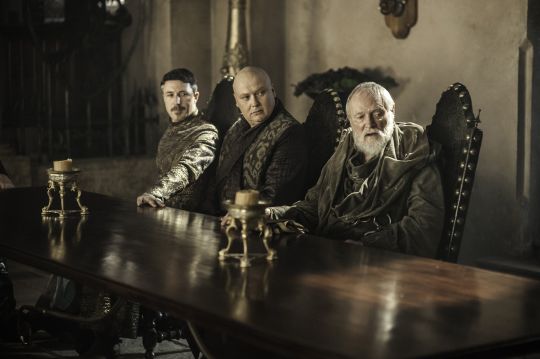
A Monarch will almost never be alone while ruling their kingdom. Even the most autocratic rulers will rely on councillors and advisors to get them through the day- even if the monarch does not take the advice given. For @bewareofhumanssociety
Monarch

The Monarch does not have to attend the meetings but they probably should. It is here that they will hear issues facing their kingdom and opportunities on hand of its expansion/betterment. The Monarch would make decisions based on advice offered their councilors, signing official documents and speaking with their ambassadors.
Lord Chancellor/Prime Minister/Vizier
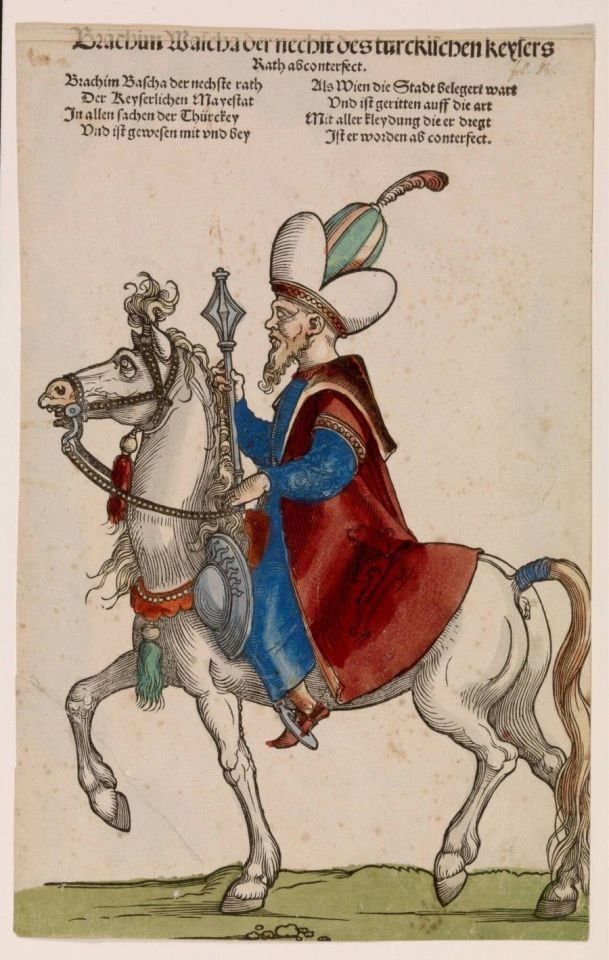
This Councillor is the second most powerful person in the Kingdom. They have possession of the Great Seal of the Realm (an ornate stamp of Office used to seal official documents) and headed the Monarch's council. They would be responsible for most of the daily running of the kingdom, sometimes the real ruler of the country. They would head the council in the monarch's absence, sometimes acting as Regent when called upon.
Comptroller of the Royal Household

This position was filled by the Monarch's Chamberlain/Steward who had the run of the royal households. They acted in concert with the monarch's other councilors to ensure the monarch's lifestyle was being maintained.
Solicitor-General

The Solicitor General is the councilor on hand to give the Monarch legal advice. The modern Solicitor General represents the monarch in court if needed and acts as a law advisor.
Treasurer

The treasurer was in charge of the finances of the realm. They would have hundreds of accountants, tax takers and businessmen at their beck and call. They would be in charge of collecting the income of the realm and putting it to good use. The treasurer is usually a powerful but unpopular position.
Lord Protector

The Lord Protector is not a permanent spot on the council, only needed when the monarch is incapacitated or too young to rule their country. The Lord Protector would take on the duties of a monarch during their tenure.
Royal Secretary
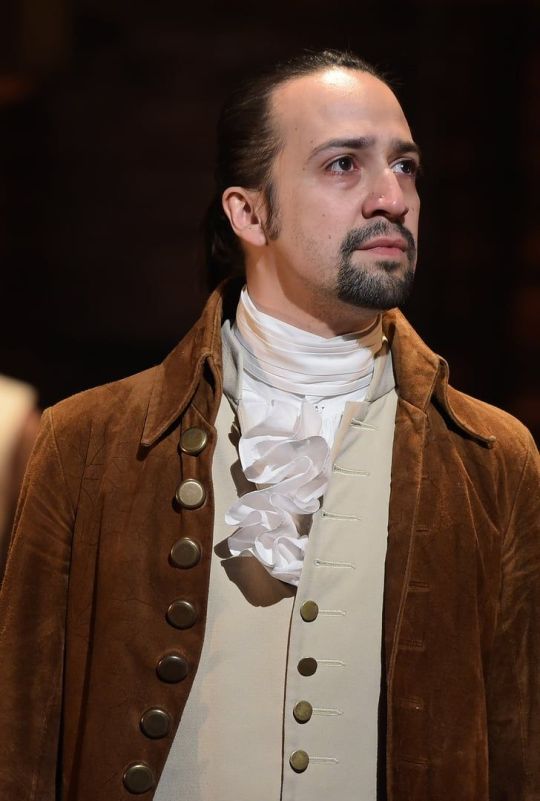
The royal Secretary is in charge of the monarch's political correspondences, keeping the council's paperwork in order and is generally tasked with communicating the monarch's choices to the other councilors.
Marshall of the Field
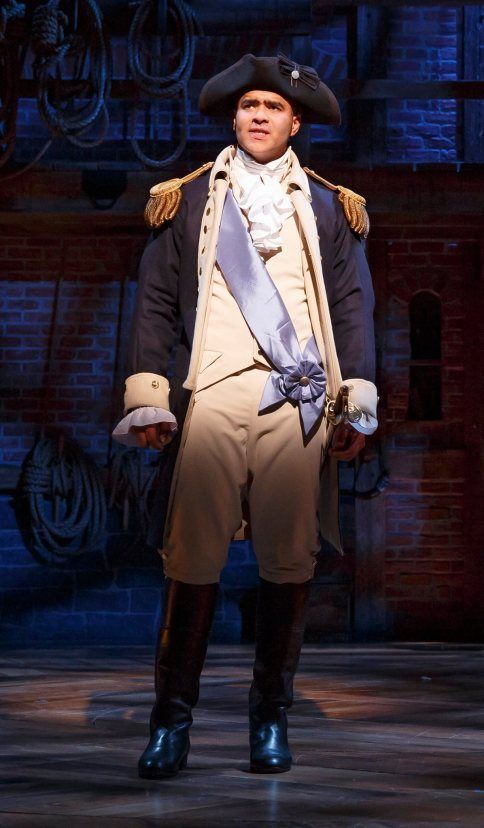
The Marshall of the Field is sometimes present at council meetings, most often before a warm They are given their orders from the monarch to represent their interests upon the field of battle. It was an honour almost exclusively given to nobility.
Admiral of the Royal Navy

Like the Marshall of the Field, the Admiral has charge of the operations of the monarch's fleet of ships. The Admiral would be tasked with the defense of the coast and the overall running of the kingdom's sea power.
#fantasy guide#monarch's council#privy council#politics#fantasy guide to councils#writing resources#writing#writing reference#writing advice
2K notes
·
View notes
Text
Let's talk about worldbuilding.
Worldbuilding is a crucial aspect of writing fiction, particularly in genres like fantasy and science fiction.
Remember that worldbuilding is a dynamic process that evolves as you write. Don't be afraid to experiment and make changes to your world as needed to serve the story.
Here are some tips to help you build a rich and immersive world:
Start with a Core Concept: Every world begins with an idea. Whether it's a magic system, a futuristic society, or an alternate history, have a clear concept that serves as the foundation for your world.
Define the Rules: Establish the rules that govern your world, including its physical laws, magic systems, societal norms, and cultural practices. Consistency is key to creating a believable world.
Create a Detailed Map: Optional, but helpful. Develop a map of your world to visualise its geography, including continents, countries, cities, and landmarks. Consider factors like climate, terrain, and natural resources to make your world feel authentic.
Build a History: Develop a rich history for your world, including key events, conflicts, and historical figures. Consider how past events have shaped the present and influenced the cultures and societies within your world.
Develop Cultures and Societies: Create diverse cultures and societies within your world, each with its own beliefs, traditions, languages, and social structures. Explore how different cultures interact and conflict with one another.
Flesh Out Characters: Populate your world with memorable characters who reflect its diversity and complexity. Consider how their backgrounds, motivations, and personalities are shaped by the world around them. (See my post on character development for more!)
Consider Technology and Magic: Determine the level of technology and the presence of magic in your world, and how they impact daily life, society, and the overall narrative.
Think about Economics and Politics: Consider the economic systems, political structures, and power dynamics within your world. Explore issues like inequality, governance, and social justice to add depth to your worldbuilding.
Show, Don't Tell: Instead of dumping information on readers, reveal details about your world gradually through storytelling. Show how characters interact with their environment and incorporate worldbuilding seamlessly into the narrative.
Stay Consistent: Maintain consistency in your worldbuilding to ensure coherence and believability. Keep track of details like character names, historical events, and geographic locations to avoid contradictions.
Leave Room for Exploration: While it's essential to have a solid foundation for your world, leave room for discovery and exploration as you write. Allow your world to evolve organically and be open to new ideas and possibilities.
Revise and Edit: Carefully review your worldbuilding to identify any inconsistencies, plot holes, or contradictory elements. Pay attention to details such as character backgrounds, historical events, and the rules of your world's magic or technology. Make necessary revisions to resolve any issues and maintain the integrity of your worldbuilding.
Happy writing!
#writing#writing tips#writing help#writing resources#writing advice#worldbuilding#fantasy worldbuilding#creative writing#deception-united
1K notes
·
View notes
Text
A writer’s guide to art and civil construction: worldbuilding insights – #1 Early Christian art (Part I)
In this guide, which delves into the history of art and civil construction, my aim is to explore the cultural and anthropological factors that influenced the emergence of particular art forms within their respective historical contexts. The goal is to inspire and offer practical insights for those engaged in worldbuilding, especially in crafting art and urban environments that resonate with their chosen settings. Throughout the guide, I will analyze various historical periods from a cultural and historical perspective, providing inspiration rather than prescriptive worldbuilding advice. It's worth noting that the focus will primarily be on the Mediterranean and Europe (I'm Italian ✨ so my academic studies focus on Italy and its surroundings), spanning from the end of the ancient age to the contemporary age.
The emergence of stylistic elements in early Christian art is fascinating because it inspires envisioning the characteristics of religious buildings in a situation where two coexisting religions, one significantly older, shape the cultural landscape.
Diachronic excursus
Let's briefly summarize the historical context surrounding early Christian art to better understand the culture and motivations behind the stylistic choices in urban and rural settings, as well as the care or neglect of these environments.
Two key points to focus on for understanding this historical reality through our chosen lens are:
Spread of Christianity
Germanic invasions (which we'll discuss in the next post)
The spread — not birth — of Christianity occurred gradually, beginning around the time of the Edict of Milan in 313 AD, issued by Constantine, which declared Christianity a religio licita, meaning that it granted freedom of worship. It was further established as the “state religion” with the Edict of Thessalonica by Theodosius I in 380, mandating worship.
While Constantine had political motives for issuing this edict (yes, the legend about Constantine’s vision is just that), our focus lies on the socio-cultural context in which an emperor favored a religion amidst a predominantly pagan Roman aristocracy.
Origins of early Christian art
In its early stages, before Christianity became the state religion, Constantine, who oversaw the construction of the first Christian places of worship, took into account the pagan sensitivities of the aristocracy. As a result, these early buildings exhibited the following characteristics:
Located outside the city center, where pagan temples were typically found (often situated beyond the city walls, as was the case in Rome);
Featuring a simple exterior, often constructed with common brick (laterizio) and lacking elaborate decorations;
Boasting monumental dimensions to accommodate the public liturgy of Christianity, inspired by the Last Supper, as well as reflecting Roman appreciation for grandeur.
The decision to depart from classical norms stylistically served both to avoid offending the aristocracy and to visually distinguish Christian structures symbolically from classical temples.
Types of buildings
Basilica
The basilica, which predates Christianity, emerged in Italy following the Second Punic War in the first half of the 3rd century BC. Originally serving administrative functions, it featured a rectangular layout with three naves (side corridors) and two apses (semicircular protrusions) on either side, with the entrance situated along the longer side.


The architectural design of basilicas was chosen for its spacious layout, although modifications were made to suit the needs of Christian worship. Unlike their original purpose, which varied, Christian basilicas typically adopted a longitudinal plan with three or five naves. They featured an entrance on one of the shorter sides, leading to a single apse opposite the entrance.
This adaptation involved repurposing buildings originally intended for other functions, driven primarily by practical considerations. An important detail regarding the structural elements is seen in the narthex and the quadriportico.
Narthex: a sort of rectangular entrance area.
Quadriportico: a large external four-sided portico attached to the entrance wall.
Both spaces were used to accommodate catechumens (the unbaptized) and penitents¹. Initially, the quadriportico fulfilled this role, but it was gradually replaced by the narthex between the 6th and 8th centuries.
This transition was prompted by changes in baptismal practices. As the custom of adult baptism declined, it became apparent that many individuals were already baptized, rendering the extensive space for catechumens unnecessary. Consequently, the need for a large quadriportico diminished.
The narthex, too, began to decline in importance from the 7th century onward, reflecting a decrease in the number of unbaptized individuals attending services.
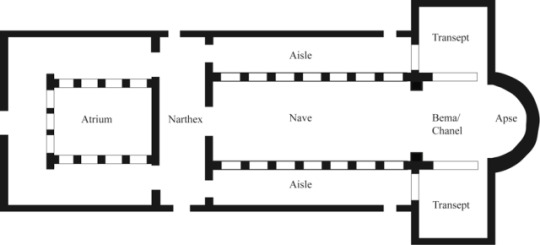
Another fascinating aspect illustrating the synthesis of paganism, Roman art, and Christianity is evident in the architectural feature known as the triumphal arch. Typically semicircular, the arch serves as a division between the central nave and either the presbyterial area.
The architectural concept of the basilica’s arch finds its origins in the Roman triumphal arch, a grand structure with one or more openings (fornix) traditionally erected to commemorate military victories. In Christianity, this symbol was reimagined to signify Jesus' triumph over evil and death. Moreover, the arch served a dual purpose as both a symbolic gateway between the space reserved for worshipers and that designated for the clergy (the presbyterial zone).


Now, I won't dive into discussing every single architectural detail of basilicas or the liturgical furnishings (although, if anyone desires, they can ask, and I'll gladly provide a glossary). Instead, let's briefly look at the different floor plans a basilica can have:
Latin cross: this design is longitudinal, with a shorter horizontal section intersected by a transept, either about ¾ along its length (immissa) or closer to the apse (commissa or tau).
Greek cross: here the transept intersects at the center, with arms of equal length to the nave. This layout was more prevalent in the Eastern tradition.
Circiform: this is a distinctive basilica design used for cemeteries, as well as for hosting specific masses like funeral banquets and an annual mass in honor of the titular saint's martyrdom. It lacks a transept and features a ring corridor intended for burials.

Baptistery
The baptistery was a centrally planned building², often octagonal, specifically designed for conducting baptisms, with the baptismal font positioned at its center.
Was traditionally distinct from the main body of the church, it was commonly situated adjacent to or in front of the main facade, especially until the Gothic period, notably in Italy.
The octagonal design held symbolic significance; eight represented an eschatological number, closely linked with the Resurrection of Christ, who rose eight days after his entry into Jerusalem. Thus, the octagon came to symbolize the concept of eternal life conferred upon the faithful through baptism.
This architectural feature reflects influence from Roman traditions, drawing inspiration from thermal buildings, particularly the frigidarium, which the Romans referred to as a baptisterium (derived from the Greek, meaning “place where one receives enlightenment”). Hence, the origin of the term can be traced back to this context.


Martyrium
Another centrally planned building (circular or polygonal) prevalent in the 4th century, the martyrium (from the Greek “witness”) was erected on the site of a martyrdom or over the tomb of a martyr.
Over time, they also began to serve as repositories for the remains of martyrs, often located at the center of the building. The martyrium's origins lie in the cult of martyrs, which itself evolved from the more common pagan reverence for the dead. Its architectural design was influenced by classical mausoleums, grand tombs traditionally used to house the remains of significant individuals.

Images, iconography, and iconology
The influence of architecture extends to imagery as well; Christianity originally spread through pagan iconography and symbolism. Art served as a means of proselytism. Why? Because classical art had long been used to convey the divine, and Christianity also drew inspiration from Roman culture in this aspect.
Even the artistic techniques bore similarities to those of the pagans:
Sculpture, as evidenced by sarcophagi.
Mosaics, widely employed for adorning basilicas (which in Roman art were mainly used for floors but eventually shifted to the apse — see subsection on the hierarchy of light).
It can be argued that from this classical influence emerged the conceptual link between wealth, splendor, and divine grandeur; gold symbolized divine light (indeed, numerous mosaics featured golden backgrounds) — a motif that would resonate throughout the Middle Ages — reminiscent of the portrayal of the deified emperor in the declining centuries of the Roman Empire. Pagan iconographies were thus reinterpreted, with scenes of apotheosis transformed into representations of the Ascension, pastoral imagery adapted to depict the Good Shepherd, and even the apostles portrayed akin to philosophers.
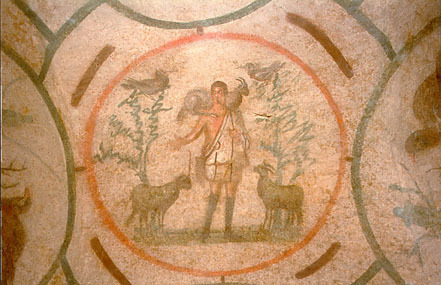

A clearer Christianization and a distancing from pagan iconography will be seen as we move forward in time, in the upcoming posts. If you're interested in a post focused on the various iconographies and their resemantization, lemme know!
Acheropite images
An intriguing outcome of the fusion between ancient cultural practices and evolving concepts of imagery is the phenomenon of “acheropite images”.
It's essential to understand that early Christians adhered closely to Jewish traditions, which forbade the creation of divine images to prevent the risk of idolatry. Moreover, due to the threat of persecution, early Christians concealed references to their faith in the catacombs through subtle allusions understood only by fellow believers, akin to a form of coded language.
The incorporation of images into Christianity, particularly in the Western world, occurred gradually, as apprehension about inadvertently creating idols spawned legends surrounding acheropite images - icons purportedly “not made by human hands”, but possessing a “miraculous” origin. These images were believed to be not products of human craftsmanship, but rather “revealed” through divine intervention, thereby attaining status as revered relics (e.g., the Shroud of Turin, the Madonna of Guadalupe, etc).
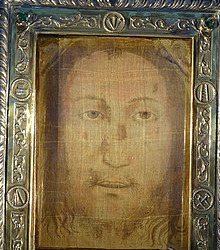

The hierarchy of light
Why do mosaics transition from the floors to the apse and, more broadly, to the walls?
We first notice this transition at the onset of the 5th century, exemplified by the apse mosaic of the Basilica of Santa Pudenziana in Rome. The driving force behind this change is light, or more precisely, the hierarchy of light. This hierarchy derives from the earlier discussed concept: the translation of divine light into the symbolism of gold and actual illumination within a basilica.
Light holds great significance in this context. It is strategically channeled through windows, particularly illuminating the apse (the sanctuary area closest to God, traditionally restricted to the clergy) and the central nave, with the side naves receiving less light. Mosaics, meticulously crafted with tesserae to reflect and enhance light, are placed in the apse to intensify this effect, emphasizing the hierarchical importance of light in this central space.

¹Penitents: in the ancient and medieval Christianity, penitents were faithful individuals who, after committing serious sins post-baptism, sought forgiveness from God. They publicly assumed a specific status within the community. ²Central plan: buildings where all parts are organized around a center are termed as having a central plan. This plan can take the form of a square, a circle, an octagon, or other regular polygons, such as a Greek cross. The centrality of space is usually emphasized by a dome.
This blog is supported through tips here on Tumblr. If you’d like to support me, please consider giving a tip.
#writing advice#writing help#writing reference#writing tips#worldbuilding through art#worldbuilding insights#worldbuilding tips#worldbuilding#fantasy worldbuilding#creative writing
35 notes
·
View notes
Text
Creating fantasy religions: something I'm doing now so thought I would post about my process.
The mistake a lot of writers make is developing a religion from a singular event, and piling a ton of stuff on top of it that makes logical sense. Whereas, in reality, religions are self propelling systems that travel under their own steam and if there is an event that catalyses them, it is never in a socio-cultural or political and economic vacuum.
You also end up with an apparently totally random set of things attached to one figure which does make sense if you know the origins, but otherwise is just accepted even if the meaning is lost.
It is the difference between "the god of Midwinter and festivals around this originated because a cult of necromancers were banished into the frozen wastes and this <event> became the Origin Story for how we got to a midwinter festival with creepy bone puppets in my fantasy world" and a religion that feels ... Real.
Ok so firstly, this is a bit too neat. (This was my original reasoning for a midwinter god called Yarash and I changed it because it wasn't very realistic or interesting for my world.)
Why, let's say, is the god whose feast is at midwinter also the patron of puppet makers and osteopaths?
Well, we could say that this makes a lot of sense because the god's festival was originally to do with remembering the dead, and puppets were used in the festival to represent the dead, as necromancy should have been part of it but people didn't actually know how to raise the dead properly. Then as magic evolved people could actually raise the dead for short periods to deliver messages in these festivals, but this drew internal debate from the conservative priests who thought puppets were the original form and so should be maintained, and necromancy was an aberration, vs the progressives who saw necromancy as the original INTENTION and so the natural and correct progression from the puppets. The debate might rage on for years creating splinters, sects, differing traditions that sit uneasily together but find middle ground in other less controversial topics and practices, and even cults.
At some point, the secular authorities get involved for their own reasons. Maybe some rulers are pro-"The Old Bones" or anti-, or they want to outlaw necromancy or benefit from it for various political reasons, socio-cultural reasons, economic reasons, military intelligence reasons, etc. Whatever happens, happens. Times change. Official attitudes swing back and forth, while internally the religious debates continue, now informed by and perhaps as counters to, this secular intervention.
Then we end up in modern times, the times of the story. Nobody really believes in gods anymore. They do remember the old gods of the seasons and at the secular festival in winter, there are a lot of traditional puppet shows that have a whole history and life of their own. The puppets are called "the old bones" and nobody really remembers why. Osteopaths have the puppets and symbols relating to the midwinter festival on their certificates and college heraldry and nobody really remembers why, but the information is there to look up and is a fun thing to know for trivia nights.
And necromancy... is a controversial branch of science, divorced from its original religious significance for many but not for all, and more integrated as an art or practice in the public consciousness (positively or negatively depending on perspective and propaganda and actual usage).
And now, you have a ton of depth and meat to it without having to flesh out the arguments and debates themselves unless that is plot relevant.
There is a lot you can do with this society now, and by tweaking one thing you can create completely different societies and ideologies. The depth is now there to set your story at any point during this history and to develop numerous ideas. So much stuff can happen.
With the singular event version, and a static fact of a necromancy cult in the frozen wastes, things are much more limited and linear, with less depth to play with.
Also remember that your characters will not be expected to know everything about your world unless they are experts in religion and/or history, and also the 2 subjects are not mutually inclusive so a historian is not an expert theologian and vice versa. How much the average person on the street knows depends on levels of formal education, accessible knowledge beyond formal education, which may include religious instruction and folklore, and propaganda. But it means you can build in some subtle things - like the puppet symbols on the door of an osteopath or bone doctor - that never need to be explained, but have a logical in-world explanation below the surface.
Try taking a static idea and work it into a system and see where it leads!
#worldbuilding#fantasy religion#world building#writing community#writing fantasy#fantasy#writing tips#writeblr#writers on tumblr#fantasy writing
381 notes
·
View notes
Text
War, Battles and Sieges: Causes of War
War is a staple of any fantasy or historical book. War is often at centre of plot. So in these set of posts, we will be discussing the different areas and aspects of writing war and battles. (If there are any other areas I do not cover, feel free to send a suggestion to the ask box.)
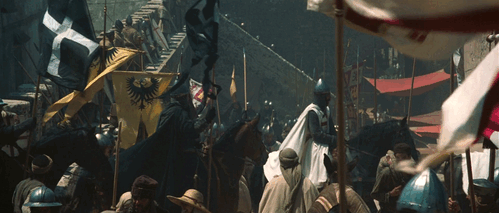
Wars in any genre must have a starting point and reasons leading up to the initial conflicts. These can be numerous. In this post we’ll discuss the eight accepted reasons for a war. These are as follows:
Economic Gain
Territorial Gain
Religion
Nationalism
Revenge
Civil War
Revolutionary War
Defensive War
1. Economic Gain
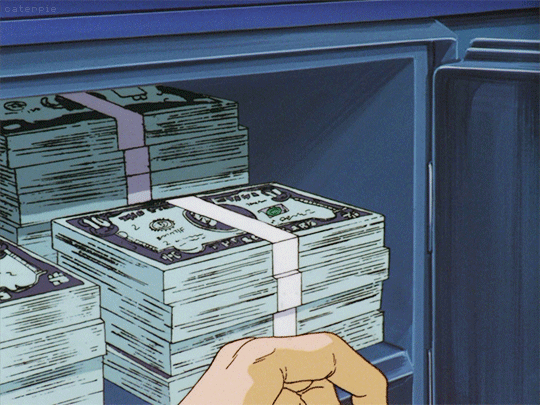
Some wars are often fought for money and assets. Really if we would break every war down to basics, money is always a factor. Countries, kingdoms and factions have been battling over gold, cattle and other things that equal wealth for centuries. Even today, wars for wealth and economic gain can be summed up in a single reason: oil.
Examples
First Anglo Dutch War (1652): The English states wanted a greater control their trading routes and their growing colonies. The Dutch wanted to keep control of their ports in and Portugal, allowing them to hold onto their emerging commercial power.
Anglo-Indian Wars (1766-1849) – These wars were were fought between the British East India Company, a trade conglomerate, and different Indian states. These wars were fought to bring India under English rule, to gain the vast wealth of India.
First Opium War (1839-1842) - The British Empire had issue with trade with China as they wanted to import more exotic items such as silk, porcelain and tea which had become more and more on demand and China preferred to keep foreign trade to a minimum. After the East India Company sold off a large amount of Opium to other trade partners, China shut down trade with British Empire including seizing assets and arresting merchants.
Finnish-Soviet War or “The Winter War” (1939-1940) – The Soviets wanted to mine Nickel in Finland, which would turn a profit. However the Finnish refused the offer leading the Soviet Union to declare war.
2. Territorial Gain

Dreams of Empire have long been the aim of many combatants in war. Invasions and Acquisitions are always numbered as the most popular causes of war and conflict.
Examples
Campaign of Gaul (58-50BC): This was the wars fought by Caesar as he invaded Gaul. This war was seen as an “illegal” war as the Senate did not approve of it. The main aim of the war was the acquisition and maintaining of Roman rule in Gaul.
Arab-Israeli War or “Six Day War” (1967-1988) – Israeli invaded the territories of the West Bank, including East Jerusalem, taking them from Jordan which led to the lengthy war.
Mexican-American War (1846-1848) – This war began shortly after annexation of Texas, where Mexico was forced to release the state of Texas to American hands. Mexico fought for the return of Texas but were defeated.
World War II (1939-1945): This war might have begun for a number of reasons but the inciting point was Hitler’s invasion of Poland and other surrounding nations.
Serbo-Bulgarian War (1885-1886) – After an act of nature, the river which marked the border between the countries of Bulgaria and Serbia was moved. After this, the two nations went to war over a disputed border town.
3. Religion

Wars have always been fought over who has the “real” god/s and who is in the right when it comes of values and customs. Wars of such have been fought for as long as men first found differences between different religions and believed themselves “righteous”.
Examples
The Crusades (1095-1291) – These wars were sanctioned by the Catholic Church in the middle ages. Popes and Kings alike all dreamed of retaking the Holy Land of Jerusalem. They wished to spread Christianity, destroy Islam and Judaism and win the land they believed theirs. The effects of these brutal wars can be felt today
The Troubles (1968-1998): The Troubles were a series of attacks and skirmishes between Protestants and Catholics in the North of Ireland. The two sides battled bloodily in streets and in attacks, claiming thousands of lives including the innocents.
Lebanese Civil War (1975-1990) – The Lebanese Civil War was fought between the Sunni Muslim, Shiite Muslim and Christian Lebanese populations.
Second Sudanese Civil War (1983-2005) – This war was caused by the predominantly Muslim government imposing sharia law on all residents including those who were non-muslim.
4. Nationalism

Nationalism can be addressed as attempting to prove that your country is the greatest by invasion or harsh subjugation. The war is often a declaration of power, a “look at us, look how strong we are.” Look at the British Empire. Ancient Rome. America.
5. Revenge
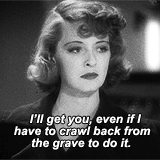
This reason often walks hand in hand with Nationalism. Revenge is a common reason for war even if it doesn’t always take the top rung on the ladder of reasons.
Examples
World War II (1939-1945) – The rise of the Nazis and the Germanic invasions of Europe all culminated because of the Treaty of Versailles, which was written in such a way to prevent Germany ever reaching full power which crippled growth and led to a poverty stricken state.
War on Terror (2001- Present) – After the devastating attack on the World Trade Center, President George W. Bush declared war Iraq. These wars, which some argue as pointless, still are being fought.
The Third Punic War (149 BC – 146 BC): The third of these wars was enacted as revenge for the waste that the famous general Hannibal inflicted on Rome during the Second Punic war in retaliation for the First war. The Third however led to the utter destruction of the city of Carthage, ending the cycle of revenge.
Troy vs Greece (Unknown date/undecided reality): Though the famous war between the Trojans and the Greeks is well known, no historian can confirm it happened. The inciting event of this war was the elopement of the Spartan Queen Helen and the Trojan Prince Paris. The Greeks followed them, leading to a 10 year war and the annihilation of Troy.
6. Civil War

Civil wars are fought between two powers of the same land for control over the country. These wars are always the most devastating for the people of the land and often end by planting the seeds for the next conflict.
Examples
American Civil War (1861-1865) - The American Civil War divided America North and South over the issue of slavery. The war was the most bloody in American history, the total of deaths outweighing even the portion of American soldiers that died during WWII.
Russian Civil War (1917-1923) – This war was caused by the successful Russian Revolution. It was fought by the Red Army and the White Army who were battling over the future of Russia and its people.
English Civil War (1642-1651): This war was fought between Parliament and the Crown. The war eventually brought down the Monarchy, lost Charles I his head and left the Purtian Dickhead Oliver Cromwell in charge. (More on this CUNT person later)
Spanish Civil War (1936-1939) – The Spanish Civil War was fought by Republicans loyal to the left-leaning Second Spanish Republic, and the Nationalists led by Franco.
Wars of the Roses (1455-1485): After Henry IV lost is mind, Richard of York decided that he would be king. This begun a chain of battles between York and Lancaster which culminated in a victory headed by a rank outsider.
7. Revolutionary War

When a faction rebels against the control of another, we get a revolution. Glorious or not, all revolutions end in in blood and spark major wars. Revolutions are popular in fictional wars and can be set off for many reasons such as tyranny or an excessively harsh ruling class or colonialism.
Examples
Russian Revolution (1917-1918)- After suffering through the harsh WWI and the reign of the well meaning yet incompetent and woefully unprepared Tsar, the people rose and overthrew Tsarist Russia. This revolution claimed the lives of thousands including all of the Tsar’s children, himself and his wife.
Portuguese Restoration War (1640-1668) – The Portuguese revolution ended the 60-year rule of Portugal by Spain.
American Revolution (1775-1783) – The American Revolution was incited by sugar taxes laud on by England. The American colonies fought for independence from the British Empire.
French Revolution (1789-1799) – The French Revolution occurred because of another incompetent monarch and a large and lavish aristocracy. The starving underclasses rose up and began slaughtering the rich and the noble and set about building a new France.
Haitian Revolution (1791-1804) – This revolution saw slaves rising up against their ruling class and masters and setting the groundwork for the foundations of the first free black republic the world has ever known.
Ireland (1169-Present?): Ireland was invaded by Henry II of England (a douche tho I stan his wife and mom), on invitation from an idiot king. Since then Ireland has been under English rule- 26 counties free and 6 under English rule. Ireland has fought rebellion after rebellion, revolution upon revolution to save the land and her people the invaders who forbade our traditions and killed our language and literally starved half the population to death and forcing us to leave our homes, which we have never recovered from. Some say our rebellions are done, perhaps they are. But the spirit is always there. I think this line sums it up best. For 800 years, we fought you without fear and we’ll fight you for 800 more.
8. Defensive War

A defensive war is a war fought before one can be started by the enemy. Or to put it simple terms: Imma punch that guy sitting over there before he can punch me. This may seem a strange concept. It is.
Examples
Cold War (1947-1991) – This war, if it can be called a war, was fought between Soviet Russia and America over nuclear weapons and where they ought to be placed. The American invasion of Cuba can be classed as a defensive war strategy.
#war battles sieges#war#causes of war#fantasy guide to war#fantasy guide#writing#writer#writer's problems#spilled words#writer's life
3K notes
·
View notes
Text
Worldbuilding: Economy
Money makes the world go around and economics of a region makes it flourish or flop. Money and trade are important aspects of any world and you must pay attention to what your kingdom produces or lacks in resources.
Resources and Goods

Though we may touch on this again with another post. Your land must produce something. Even if it is a barren wasteland, your land must produce something in order to survive. It can produce items in categories.
Food: Food is a great way to make money. A seafaring kingdom might produce fish. A landlocked kingdom with fertile soil will produce wheat, barley, rye and other things. All of this can be sold either in the kingdom or abroad, a portion of the trade of course going to the government’s treasury. Food is always a good trade scheme but be mindful that it is something that can falter or be easily destroyed.
Materials: Kingdoms will produce some semblance of a material. It could be stone for building, gold for decoration, sulphur to make gunpowder or flax for making clothes. Materials are always desired at home and abroad and if your kingdom produces the best or most of a certain material it will be famous for it. Like Sheffield steel or Italian leather.
Skill: Sometimes people can be traded or their skills at least. A kingdom that sells a skill will be prized. Think of Sparta and their warriors, Athens and its wise men, Florence and its sculptors and painter or Japan and its software developers. A skill will enhance prestige on the world stage and give them a reputation.
Markets, Plazas and Agoras

When we talk about buying or selling, we often forget where this occurs. Every great city has a marketplace and every major town will have them. When you pinpoint where a character lives or where the story takes place, you should think of it’s economical value and status. Questions to ask yourself.
Home: Which city has the most power in the economy? Which costal areas are the major ports? Which city is the richest? How far do people have to travel to sell goods or buy them?
Abroad: Is there a trading route like the Silk Road? Which kingdom is the richest or poorest? What kingdom is hardest to travel to? Or the closest trading partner? Are there any countries that have been banned as trading partners?
Money or barter

There are two common types of payment for a good. You can pay with money or swap it for something else. Money of course can be in coin of note form. Look at my Fantasy Guide to Currency for more of this. Barter is easier in some cases. You have a goat and you want a small row boat. Is the goat worth the boat? Will all the milk the goat produces match or make more money that the fish the boatman catches? Do nobility use one system and the poor use others? When the tenants of a land pay rent is it in coin or barter? If they can’t pay in coin is bartering a common alternative?
Banking

All the world runs on the backs of banks. Pushing all the bad shit aside, banks are there to loan money or to store it. Banks give out loans for businesses or for projects. Most banks would expect some kind of repayment. In Renaissance times, a bank that did this was slandered as usurers. Banks have often wielded power. The Medici bank brought the owners up to the status of first family in Florence, Grand Dukes of Tuscany and even Pope. What do people think of the banks? Are they hated for their biting rates? Are they respected for their fair dealings with the people? What does the bank own? What are their relationship with the people, nobles and royalty?
Transportation and cost
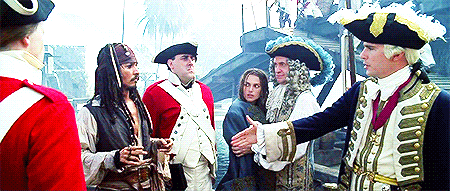
To sell anything will cost you. You must calculate how much it would cost to make a good, transport it and sell it to a buyer. If you were selling something across the sea, how much will shipping cost you? If you were to have items brought to your home from another city, how would you do it?
Here is a problem for you to practice with: If a poor farmer wants to sell a cow in the capital and he lives fifty miles away beside a major road and river, with no wagon or horses and no money for passage on the river, how does he get there?
#fantasy worldbuilding#worldbuilding tips#worldbuilding#fantasy guides#fantasy guide#writing#writer#writer's problems#spilled words#writer's life
5K notes
·
View notes
Text
Fantasy Guide to Employment: Household of a Castle
The castle does not run itself. The castle would remain a pile of stones without servants to keep it running. The guide below focuses on the private household of the lord himself, anybody who worked inside the main keep of the castle. I will be expanding outside the walls in a future post.
The Steward/Seneschal

This person was the head of the household staff. They would have the task of running things on the Lord's estate. They are the managers, so it is up to them to keep the staff in line. The steward would keep the castle accounts and keep the lord informed of all of the goings on of the lands and tenants. They would have to be educated needing to do accounts and write letters. Though the castle's Lady would be expected to do all these things, the steward served as a backup and assistant in all the tasks even representing the lord and lady when they were unavailable.
The Chamberlain

The chamberlain is the servant employed to look after the Lord's bedchamber. He would look after the Lord's clothes as well and keep track of the other servants' liveries, the official uniforms of the guards, pages and squires. This was not always the case, some larger households had a separate office but most medium seized manors and castles lumped them together. The chamberlain's main task was ensuring the lord was kept happy. He would even be the last servant a lord would see at night before he went to bed at night. They would be educated.
The Marshal
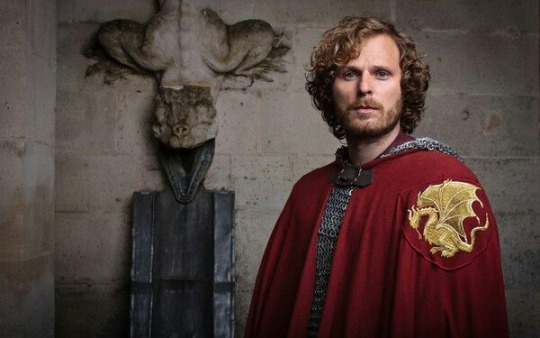
A Marshal was in charge of the stables as well as the military presence in the castle. They would oversee the household's horses, carts, wagons, and containers. He oversaw blacksmiths, horse grooms and stableboys. He also oversaw the transporting of goods. The Marshal was sometimes in charge of disciplining servants. They would likely come from a middle class background as well as having military experience and education.
The Page

A page was a young noble boy about seven years old who would be sent to serve a Lord. He would be in charge of tidying up after the lord, carrying messages to other servants and occupants of the castle and serving him at meals. Unlike others on the list, the page would not be paid. His experience was his payment as he would learn the running of a castle and manners of a lord.
The Lady's Maid
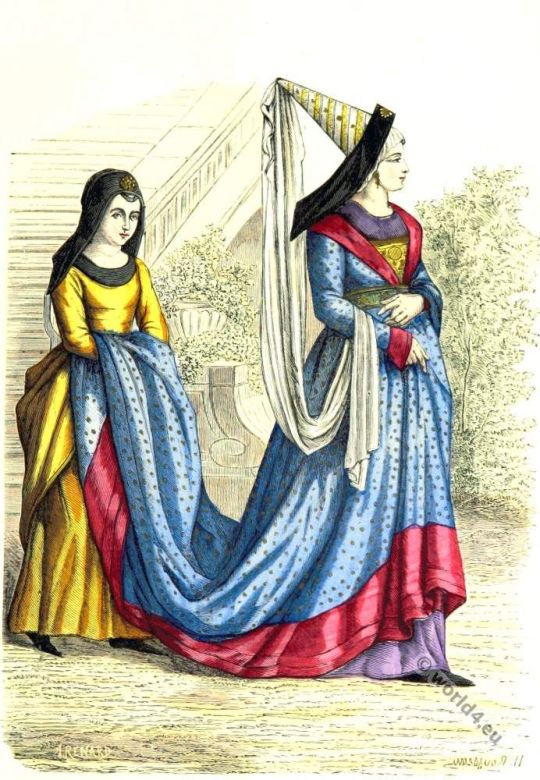
The lady's maid is be the female body attendant of the castle's noble women. She would be in charge of caring for the lady's chamber and her things. She would dress the lady and attend her wherever she would. (The lady's maid would basically do all the work a chamberlain would but you know the wage gap...)
Maidservant

A housemaid/maidservant works to clean the castle. She would be among the first to awaken every morning. Her first task would be sweeping the floors. The thing with mediaeval floors a that they were often covered with a thin layer of rushes, a kind of grass. Weekly if not daily, a maidservant would be expected to change out the rushes and scatter new ones. If it really needed it, she would scrub the stone floors which would be done with a soap called lye, made from ashes and lard. The maidservant would also be expected to go into the bedchambers when the occupants awoke. She would empty the chamberpots if need be. She would get rid of the ashes from the fire and ready the fire for later. She would make up the bed or strip it for the laundresses. She would wash anything that needed washing including furniture and ornaments.
Laundress

The laundress was responsible for the cleaning of anything made of fabric in the household. The laundress would have to fetch their own water either from the castle well or from a nearby river. They would heat the water in large vats and add lye soap (the most popular of the cleaning agents). The constant exposure to soap and hot water was physically tough on the hands of the laundresses and their backs. When the detergents were added to the water, the laundress would dump them into the vat and stir that shit like soup. To dry it they would pin it out on lines or beat the water from it. The laundress might make money by selling secrets. Since they are handling unmentionables, they knew what happened behind closed bedchamber doors or what didn't.
Nursemaid

The nursemaid was in charge of the castle's children. They would ensure the child was fed, washed and generally kept alive while the parents would either be away at court or busy with the lands. The nursemaid would be a common woman from the surrounding lands who would come in to care for a noble child in the stead of the mother who would be expected to get on with other jobs. The nursemaid would be an underlying of the noble governess, a sort of hands-off nanny.
Cook

The cook was one of the most important servants in the castle. They would have the task of overseeing the running of the kitchens and keeping supplies in order. They would likely be on call at all times. Henry VIII's cook was often woken in the night because his royal master wanted a midnight snack. The cook was a valued member of the household and would have been highly sought after if they were a very skilled cook. Cooks would have been paid a handsome wage.
Scullion

The scullion was the lowest member of staff. They would be responsible for scrubbing and cleaning the servants quarters and the kitchens. They would scrub floors with lye, scour pots with sand, sweep put the fireplace and clean up after the other servants. They were the first to rise in a castle and tasked to light all the fires in the kitchens.
Payment & Lifestyle
Within the mediaeval household, payment came from the hand of the steward. As the Lord's manager of accounts, he was in charge of paying staff.
The grander jobs in the castle such as the marshal, the chamberlain, nursemaid and lady's maid would pay better. They would have certain privileges including better bedchambers.
A nursemaid who was breastfeeding the Lord's children would be a valued member of staff. She would be fed better than the other servants.
The page would sleep in a chamber off the lord's bedchamber or sometimes at the foot of the bed. A page would wear the Lord's livery so he would be dressed on the Lord's coin.
The chamberlain would have rooms close to the lord and lady, just in case they were needed by the master in any kind of emergency.
The cook would sleep near the kitchens so they were close enough just in case they are needed in the night.
The other household servants would all sleep in chambers together. The women would sleep in one and the men would sleep in another. Nightly dalliances were frowned upon massively.
Most servants came from the surrounding lands of the castle. When the lord and his family were away at court or somewhere else, there would be a drop in employment. Everything would be cut down ex. Instead of three laundry maids, only one might stay on after the lord goes. The steward, the marshal, the chamberlain, the page, the cook, the nursemaid and the lady's maid were all important staff so their job would be permanent.
#fantasy guide#castles#castle household#servants#mediaeval#mediaeval jobs#mediaeval castles#fantasy guide to employment#writing#writing resources
31K notes
·
View notes
Text
Fantasy Guide to Royal Households and How they Work

When I say Households, I mean the entourage that follows around the royal family. The household went everywhere with them to care for their needs from the people who would empty their chamber pots to their noble companions. Most royal households are basically the same as noble ones, only on grander scale. Every royal had a household and an entourage as well as every noble at court.
Palace Personnel ~ The Commons

The commons were an intregal part of every household. They made up perhaps 80% of the work force. Royal courts were often on the road and never spent more than a few months at every palace. The court was constantly moving. Some positions were not permanent, meaning certain servants did not travel with the court because they were employed at the palace only. They would be paid by the Monarch's paymaster.
Scullion: The scullion was a relatively easy position to fill so they were often changed as the court went from palace to palace. They would be responsible for scrubbing and cleaning the servants quarters and the kitchens. They would scrub floors with lye, scour pots with sand, sweep put the fireplace and clean up after the other servants. They were the first to rise in a castle and tasked to light all the fires in the kitchens. Scullions would just be employed to the palace and serve a multitude of chambers
Laundress: The laundress was responsible for the cleaning of anything made of fabric in the household. Since they are handling unmentionables, they knew what happened behind closed bedchamber doors. They knew when the King visited the Queen or hadn't, they knew when marriages were consummated or not and they knew when the Queen and royal women were not pregnant. They often sold secrets to pad their pockets. Laundresses might be permanent staff but sometimes not.
Minstrels: The minstrel was a commoner hired to play an instrument or sing for the entertainment of the royal. A royal might staff a few at a time but they would always have one on hand. The minstrel would likely come with their masters as they travelled. The minstrel might serve the main royal household but a royal might retain their own.
Cook: The cook was one of the most important servants in the household. They would have the task of overseeing the running of the kitchens and keeping supplies in order. They would likely be on call at all times. Henry VIII's cook was often woken in the night because his royal master wanted a midnight snack. The cook was a valued member of the household and would have been highly sought after if they were a very skilled cook. They would have travelled with the joint. Cooks were apart of the greater royal household but often royals retained private cooks for their own use.
Maidservant: The maidservant cleans the castle. She would sweep the floors, scrub them, empty the chamberpots, get rid of the ashes from the fire and ready the fire for later. She would make up the bed or strip it for the laundresses. She would wash anything that needed washing including furniture and ornaments. She was likely not a travelling servant and would be strictly employed at a single palace.
Jester: The jester was the hired entertainer. Working under the master of revels, the jester had the daunting task of making the monarch and their family laugh. They would tell jokes, tell stories, cause havoc in the court for laughs and lighten the mood. The most successful jester of all time was Will Somers, jester to Henry VIII. Will broke bad news to the infamously bad tempered monarch and got away with things that would have sent others to the block. Will survived most of Henry's reign, his head intact. Jesters would be apart of the main household though each royal might have one of their own.
Positions within the Royal Household ~ Noble


Nobility were always welcomed at court. They eat at court, slept at court and were cared for by the monarch. Some nobles had to sing for their supper and most were hired as royal servants. They weren't exactly scrubbing floors and would be paid handsomely with land that would generate wealth for them
The Steward/Seneschal: This person was the head of the royal's staff. They would have the task of running the lands and servants their master or mistress. The steward served as a backup and assistant in all the tasks even representing their master or mistress when they were unavailable. Would be a high ranking noble. Each royal household would have them.
Treasurer of the Household: The treasurer was the accountant and pay master. They would be in charge of ensuring debts were settled, wages were paid and the household was running within the budget. This was a coveted position because it gave the treasurer insight into the financial situations of the royals. Such info was wroth its weight in gold. Each royal would have one.
Usher: The Gentleman Usher would be in charge of escorting guests into the royal chambers and into the royal presence. They would act as a go between their royal master/mistress and the guest often going back and forth with messages. It was just as coveted as the position of chamberlain but with less responsibilities.
Master of Horse: The Master of Horse was in charge of seeing to the horses of their master. They would oversee the grooms or the stableboy/hands who were employed at the stables to actually care for the horses. The master of horse would ensure that the stables were in order and the horses were up to parr in order to bear royalty across the kingdom. Each royal would have one but there would a main one who acted as overseer.
Master of the Wardrobe/Mistress of the Robes: These are the nobility who are employed to look after the clothes of the royal they serve. This would mainly involve a managerial position, overseeing the inventory of the royal wardrobe (a warehouse like building that housed the clothing) and placing orders for new clothes. It was a tidy job that rarely involved getting the hands dirty. Each royal would have one.
Chamberlain/Valet: The chamberlain is employed to look after the Lord's bedchamber. This was the most sought out position as they effectively were the gateway into the royal presence. Their main task was making sure their boss was comfortable and happy. Could be a well born commoner or a noble. Each royal would have one.
The Page: All royal households had pages. They would be a young noble boy about seven years old sent to their royal master. He would be in charge of tidying up after the lord, carrying messages to other servants and occupants of the castle and serving him at meals. Unlike others on the list, the page would not be paid. His experience was his payment as he would learn the running of a court and how to be courtier. Each royal would have one.
Squires: Squires were like pages though they only served the men. They would accompany their royal master to battle, look after his armour and mail, ensure that his lord's horse was saddled, caring for their master's weapons. The squire would always be a young nobleman on the cusp of becoming a knight.
Governess: The governess is a noblewoman woman employed to oversee the Monarch's children's household. She would be the first teacher a royal child would have and would oversee the nursemaids who would have care of the physical person of the child. She would be appointed when the child was four or five. Notable governesses include Katherine Swynford (wife of John of Gaunt and mother to the Beaufort line), Margaret Pole (wife of Tudor Loyal Sir Richard Pole, sister of the last York heir Edward of Warwick, daughter of George Duke of Clarence and niece to King Edward VI and Richard III), Kat Ashley, Margaret Bryan, Madame de Maintenon and Baroness Lehzen. Most unmarried Princesses retained their governesses while Princes generally outgrew their governesses after they were breeched.
Gentlemen of the Privy Chamber: They were the male companions of a King or Prince, sort of like ladies in waiting but manly. They would accompany the King or Prince everywhere they would go and shared duties with Groom of the Stool (royal toilet paper dispenser) and the Chief Gentleman of the Chamber (overseeing the staff and maintaining the chamber). They would help their master get ready, serve him at the table and organize hunting and games to keep him entertained. Gentlemen and companions where often chosen for their connections as well as their master's own opinion. Henry VIII's gentlemen included: Sir William Compton (ward of Henry VII and heir to rich lands), Sir Henry Norris (the grandson of William Norris who fought with Henry's father at Stroke and a relation to the Yorkists Lovells), Sir Anthony Denny (son of Sir Edmund Denny Baron of the Exchequer) Sir Michael Stanhope (brother in law to Edward Seymour, Duke of Somerset), Charles Brandon (ward of Henry VII and son of Tudor Loyalists)
Ladies in Waiting and Maids in Waiting or Maids of Honour: These are the female attendants to the Queen or Princess. Ladies in Waiting were married while the Maids were unmarried. They would have to attend their mistress wherever she went, help her get ready, keep her chambers in order, write letters for the Queen and maintaining her honour. They were chosen for their connections. Using Katherine of Aragon as an example, her Ladies in Waiting included: Maria de Salinas (daughter of Juan Sancriz de Salinas secretary to Isabella, Princess of Portugal and a Spanish courtier in the service to Katherine's parents, wife of Baron Willoughby de Ersby), Elizabeth Howard (the daughter of Thomas Howard, 2nd Duke of Norfolk, sister to Thomas Howard, 3rd Duke of Norfolk and wife to Thomas Boleyn, ambassador to France), Anne Hastings (daughter of William Hastings, 1st Baron Hastings, wife to George Talbot, Earl of Shrewsbury and Lord Steward.), Agnes Tilney (wife to Thomas Howard, Earl of and 2nd Duke of Norfolk.), Elizabeth Scrope (wife of John de Vere, Earl of Oxford, a loyal Tudor lord), Margaret Scrope (wife of Sir Edmund de la Pole, Earl of Suffolk cousin to the King), Anne Stafford (sister of the Duke of Buckingham, married Sir George Hastings, Earl of Huntington and daughter of Henry Stafford, 2nd Duke of Buckingham (cousin to the King) and Lady Katherine Woodville (sister of King Henry VIII's grandmother and his great aunt by her marriage), Elizabeth Stafford (sister to Anne Stafford wife Robert Radcliffe, Lord Fitzwalter and Earl of Sussex around). Their connections are what got them their places and you can see why they were chosen.
Accommodation

Accommodation can be a difficult thing to sort both as a writer and a steward. You might have a palace of 200+ bedchambers in which you must house a staff of 500-/+, a varying amount of nobles, the royal family (of a varying amount) and their own households. When assigning rooms it is best to think of a Russian nesting doll. Start from the inside and work your way to the outside.
The best rooms go to the monarch, their consort and their children/siblings/parent(s). These chambers would include the bedroom, a drawing room/ common area, a privy, a closet (a small chamber that can be used for prayer or work). They would be furnished with the best cloth, the best candles and whatever furniture brought by the resident since most royal courts travelled from palace to palace. They will also have chambers for their personal servants such as ladies in waiting and grooms.
The second best set of rooms would go to the highest ranking nobles/people in the court. These rooms would be less fancy and a little smaller. These would be given to from titled nobility descending from those of Ducal rank (Dukes/Duchesses) or even members of the council such as Thomas Cromwell in Tudor times.
The next set would be considerably smaller, perhaps minus a closet or a drawing room. Given to lower nobility.
The next level of chambers would be smaller perhaps only the bedroom and a common area given to minor nobles.
The last set of rooms would be small and only hold enough room for a bedroom. Servants would have to sleep on the ground on pallets beside their masters.
Any other guests at court would have to stay at off-site locations around the palace in the city. Some nobles at houses around major palaces just in case they arrived late or were kicked out of court.
#fantasy guide#households#royal courts#royal households#request#courtiers#nobility#nobles#royal palaces#writing
18K notes
·
View notes
Text
Fantasy Guide to Royal Guards

Royals have multiple layers of servants but there is no set of servants most important that their protection. Royalty are never without some kind of protection and palaces are usually guarded to the teeth. So how do we write royal security. This is for @jamie-ties-writing
Recruitment
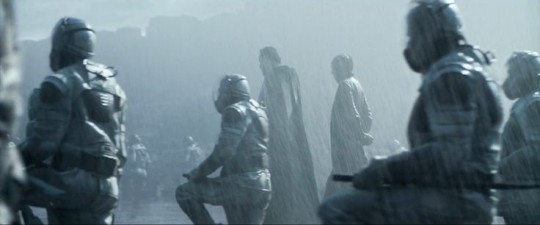
Royal guards aren't just any person plucked from the street and put into a uniform. They are usually recruited from within the royal army, from within particular regiments across the army (a mixture of calvary, naval, artillery, infantry). The Royal Guard is usually made of of multiple regiments, not just a single one. These regiments would share and rotate duties. The British Royal family are currently guarded by the Coldstream Regiment, Welsh Guards, Grenadier Guards among others. Royal guards will be selected for their skill, sometimes their birth (they may be chosen if they rank higher socially) and of course, loyalty to the Crown. Royal guards were intended to be a show of force, strength, Majesty so they were usually impressive specimens meant to instill some power to their monarch.
Duties
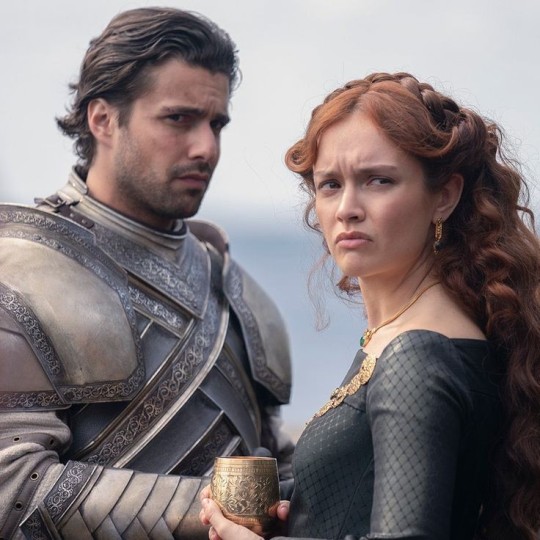
A royal guard's first order of business is the protection of the family. They may have sentry duty around the palace, guarding doors or patrolling palace grounds or corridors. A Royal Guard may be assigned to one member only but most likely they will rotate through the family as needed. Of course, a royal can request a guard to always be assigned to them if they want. They may escort their charge of the day to their engagements. If assigned a certain royal to protect, they would tail them throughout the day. A royal guard may even perform ceremonial duties such as the changing of the guard or riding in coronations or state funerals. A royal guard is expected to remain vigilant but never speak of what they see, they are meant to keep an ear out for threats but never repeat whatever is said, they are expected at all times to uphold a professional countenance and respect protocol. They will be expected to give their lives if needed, and be loyal to the last.
Rank
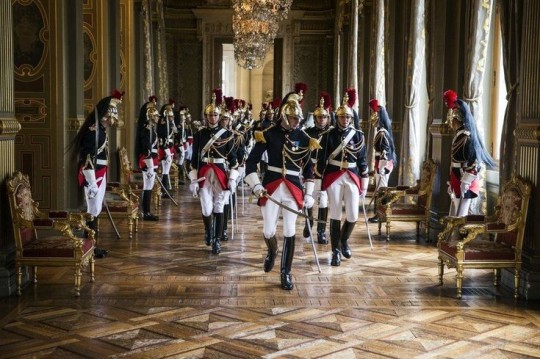
Royal guards are a military division and rank is a part of their lives. Their supreme commander would he the monarch first but there would be an appointed commander. Depending on how you want to write Royal Guards, each regiment would have it's own captain and leaders. Of course, not all regiments may adhere to the same ranks but this would be a basic outline for you to follow.
Colonel: Colonels actually have no duties, they are more an honourary figurehead. Many members of the royal family would have a regiment to be colonel of. This usually requires nothing more than a ceremonial role, the wearing of the uniform while inspecting the troops for example.
Captain: The Commander of the regiment. They would undertake managerial duties, issuing commands from the monarch, assigning duties, approving the induction of new guards into the Household Division. The Captain would decide who would guard which member of the royal family.
Lieutenant: The Second in command. They will assume command if the Captain is not available. They would take on a large portion of duties and aid the Captain.
Sergeant: The sergeant would be next in command.
Guardsman: The lowest rank. They will have the least experience but usually the most duties. They would be the ones patrolling and standing sentry.
Uniform

Of course, no royal guard is complete without their uniform. Royal guards would have to stand out, especially in ceremonial duties. This uniform would be distinctive, not only because it is a great honour for anybody to be named to the guard but also as mentioned above, to add a layer of might to those they protect.
Notable Royal Guard Units

Dahomey Mino (the inspiration of Black Panther's Dora Milaje)
The Praetorian Guard
The Imperial Guard of Napoleon
The Imperial German Bodyguard
Varangian Guard
Swiss Guards
The Kheshig
The Janissary
The Imperial Guards of Tsarist Russia
The Cossack Guard
Guardia Real
Coldstream Guards
Irish Guards
Welsh Guards
Grenadier Guards
Medjay of Ancient Egypt
Al-Ḥars al-Malakī as-Suʿūdī
Compagnie des Carabiniers du Prince
Thahan Raksa Phra Ong
#fantasy guide to royal guards#royal guards#royals#royalty guide#fantasy guide#writing reference#writing resources#writing advice#writing resources writing reference#writing
2K notes
·
View notes
Text
Fantasy Guide to Building A Culture
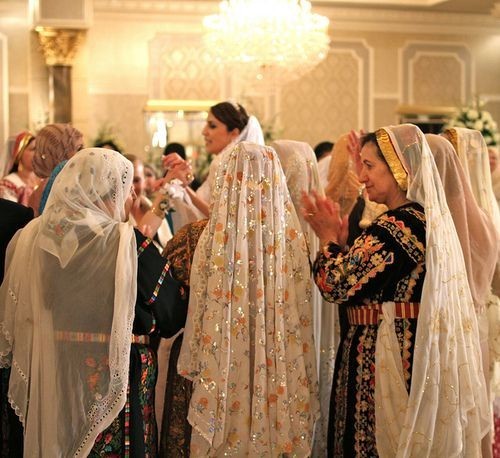
Culture is defined by a collection of morals, ethics, traditions, customs and behaviours shared by a group of people.
Hierarchy and Social Structures

Within every culture, there is a hierarchy. Hierarchies are an important part of any culture, usually do ingrained that one within the culture wouldn't even question it. Hierarchy can be established either by age, gender or wealth and could even determine roles within their society. Sometimes hierarchy can may be oppressive and rigid whilst other times, ranks can intermingle without trouble. You should consider how these different ranks interact with one another and whether there are any special gestures or acts of deference one must pay to those higher than them. For example, the Khasi people of Meghalaya (Northern India), are strictly matrillineal. Women run the households, inheritance runs through the female line, and the men of the culture typically defer to their mothers and wives. Here are a few questions to consider:
How is a leader determined within the culture as a whole and the family unit?
Is the culture matriarchal? Patriarchal? Or does gender even matter?
How would one recognise the different ranks?
How would one act around somebody higher ranking? How would somebody he expected to act around somebody lower ranking?
Can one move socially? If not, why? If so, how?
Traditions and Customs
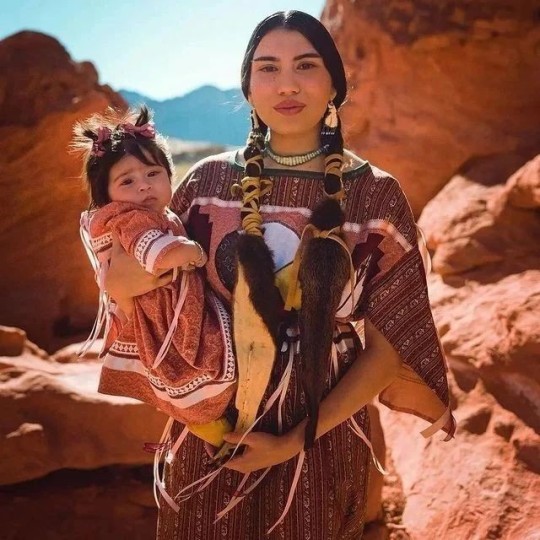
Traditions are a staple in any culture. These can be gestures or living life a certain way or to the way a certain person should look. Traditions are a personal detail to culture, they are what make it important. Tradition can dictate how one should keep their home, run their family, take care of their appearance, act in public and even determine relationship. Tradition can also be a double edged sword. Traditions can also be restrictive and allow a culture to push away a former member if they do not adhere to them, eg Traditional expectations of chastity led to thousands of Irish women being imprisoned at the Magdelene Laundries. Customs could be anything from how one treats another, to how they greet someone.
How important is tradition?
What are some rituals your culture undertakes?
What are some traditional values in your world? Does it effect daily life?
Are there any traditions that determine one's status?
Values and Opinions
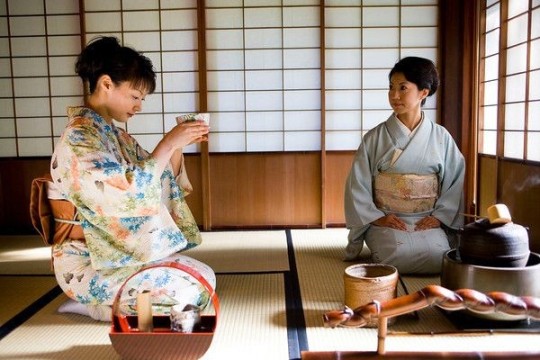
Values and Opinions are the bread and butter of any culture. This is the way your culture sees the world and how they approach different life hurdles. These may differ with other cultures and be considered odd to outsiders, what one culture may value another may not and what opinion another holds, one may not. There will be historical and traditional reasons to why these values and opinions are held. Cultures usually have a paragon to which they hold their members to, a list of characteristics that they expect one to if not adhere to then aspire to. The Yoruba people value honesty, hard work, courage and integrity. Here are some questions to consider?
How important are these ethics and core values? Could somebody be ostracised for not living up to them?
What are some morals that clash with other cultures?
What does your culture precieved to be right? Or wrong?
What are some opinions that are considered to be taboo in your culture? Why?
Dress Code
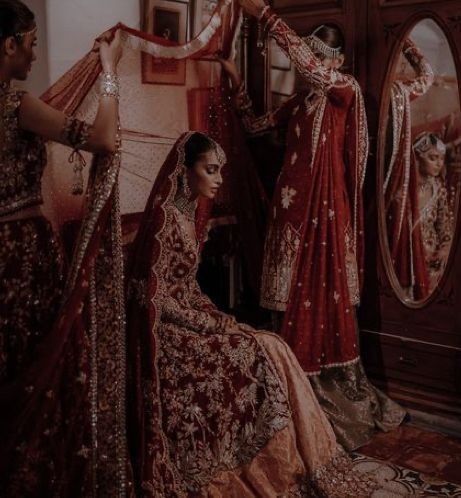
For many cultures, the way somebody dresses can be important. History and ethics can effect how one is meant to be dressed such as an expectation of chastity, can impose strict modesty. While other cultures, put more importance on details, the different sorts of clothes worn and when or what colour one might wear. The Palestinian people (من النهر إلى البحر ، قد يكونون أحرارا) denoted different family ties, marriage status and wealth by the embroidery and detailing on their thoub.
Are there traditional clothes for your world? Are they something somebody wears on a daily basis or just on occasion?
Are there any rules around what people can wear?
What would be considered formal dress? Casual dress?
What would happen if somebody wore the wrong clothes to an event?
Language

Language can also be ingrained as part of a Culture. It can be a specific way one speaks or a an entirely different language. For example, in the Southern States of America, one can engage in a sort of double talk, saying something that sounds sweet whilst delivering something pointed. Bless their heart. I have a post on creating your own language here.
Arts, Music and Craft

Many cultures are known for different styles of dance, their artwork and crafts. Art is a great part of culture, a way for people to express themselves and their culture in art form. Dance can be an integral part of culture, such as céilí dance in Ireland or the Polka in the Czech Republic. Handicrafts could also be important in culture, such as knitting in Scottish culture and Hebron glass in Palestine. Music is also close to culture, from traditional kinds of singing such as the White Voice in Ukraine and the playing of certain instruments such as the mvet.
Food and Diet
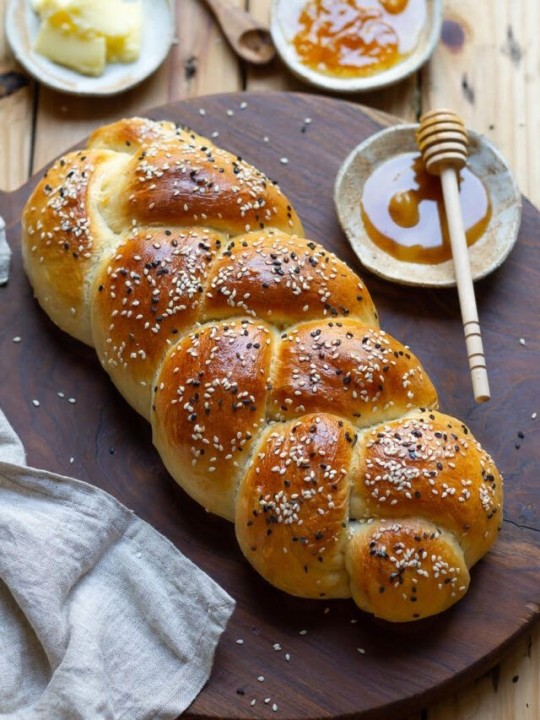
The way a culture prepares or intakes or treats certain foods are important to a culture. In some cultures, there is a diet yo adhere to, certain foods are completely banned. With Jewish culture, pork is prohibited along with fish such as sturgeon, along with shellfish and certain fowl. Meat must also be prepared in a certain way and animal byproducts such as dairy, must never be created or even eaten around this meat. This is known as kosher. The way one consumes food is also important to culture. In some cultures, only certain people may eat together. Some cultures place important on how food is eaten. In Nigerian culture, the oldest guests are served first usually the men before the women. In Japanese culture, one must say 'itadakimasu' (I recieve) before eating. Culture may also include fasting, periods of time one doesn't intake food for a specific reason.
What are some traditional dishes in your world?
What would be a basic diet for the common man?
What's considered a delicacy?
Is there a societal difference in diet? What are the factors that effect diet between classes?
Is there any influence from other cuisines? If not, why not? If so, to what extent?
What would a typical breakfast contain?
What meals are served during the day?
What's considered a comfort food or drink?
Are there any restrictions on who can eat what or when?
Are there any banned foods?
What stance does your world take on alcohol? Is it legal? Can anybody consume it?
Are there any dining customs? Are traditions?
Is there a difference in formal meals or casual meals? If so, what's involved?
Are there any gestures or actions unacceptable at the dinner table?
How are guests treated at meals? If they are given deference, how so?
#fantasy guide to building a culture#culture#building a culture#fantasy guide#worldbuilding#worldbuilding guide#worldbuilding help#writing help
11K notes
·
View notes
Text
I just wanna toot my own horn for a sec. Since I’m usually self deprecating I hope it’s alright this time lol!
In this video I watched a while back, I heard worldbuilding advice like “go deeper, not wider.” It’s usually in reference to magic systems: “instead of making dozens of spells that are just glossed over, make only a handful but their full possibilities are explored.” Avatar the last airbender is something I’ve seen been given as an example of this. Instead of having tons of elements with basic powers, the show only has four, but they’re well very thought out. Possibilities like “hey, isn’t there water in your blood?” “lightning is superheated air just like fire” “metal is a type of material found in the earth” were accounted for and expanded upon. It was awesome
Id like to think I do this as well, at least sometimes
The elemental barons are a blatant example, since they’re pretty much the same concept as benders in atla. The baron of lightning is the one I’m proudest of. He can manipulate electricity, which is the flow of electrons. I’ve researched tons of sources of electricity and strange properties of electrons in order to understand just what he can do. Neurons and muscles are activated with electricity, electric currents generate magnetic fields, manipulating the electricity in a wire technically means manipulating the electrons of the metal itself… I’m having a lot of fun learning what crazy thing he could do next!
I’m also proud of the fact that there really aren’t that many individual technological advancements. The ship’s dome is made up of a force field. Instead of coming up with tons of high tech future stuff, I just keep realizing that being able to generate force fields has a ton of applications. Ochron’s eyepatch is held up with a force field band. Space suits are force fields generated around the wearer. An idea that may go unused is a glove that creates pointed force fields to act like claws. I’ve entertained the idea of resizable phones by having them be made of a force field that can be transformed like a desktop window.
Idk man, tldr I took the “go deeper not wider” rule to heart and I’m having a blast figuring out what every implication of the magic and tech I’ve imagined could be
8 notes
·
View notes
Text
Worldbuilding Tips: How to Find Inspiration
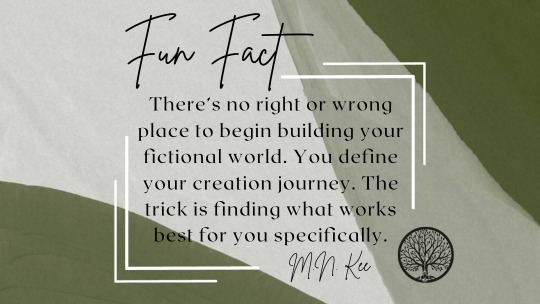
Picture this. You’re minding your own business when out of nowhere you’re struck with creative genius. This new story idea consumes your every waking thought, playing out like a brilliant movie inside your head. However, when you try to put pen to paper (or fingers to keyboard), words fail you. It’s a dilemma all writers face in their career. How do you turn an idea into reality? Don’t fight it. Explore it.
Fun Fact: There’s no right or wrong place to begin building your fictional world. You define your creation journey. The trick is finding what works best for you specifically.
Are you more visual? Pinterest is a great source of inspiration. Keyword searches are your friend. What is a keyword? It’s a “significant word from a title or document used especially as an index to content.” Type in a word(s) into the search bar that summarizes the aesthetic you’re visualizing and let the magic happen. This could be anything from a color, time period, genre, trope, etc. Take one of my own creations, Scavenge Clan, for example. Keywords I associate with it include: hyena, werehyena, bones, gothic, scavenger, vulture culture, vultures, black-haired women, death. Over time, your searches will affect your algorithm, giving you more ideas that line up with your stories in the long run.
Are you more auditory? Creating Spotify playlists that remind you of your story and/or characters can help give you more inspiration and set the mood for when you start writing.
Are you both visual and auditory? I love collecting fan made tribute videos on YouTube of TV shows and movies that give me a source of inspiration for my stories. For example, the TV show Grimm with a splash of the grounders from The 100 inspired my main story universe The Culling Wars.
Wherever you draw inspiration from, take advantage of it. Use it to expand your ideas and to help you when you’re feeling stuck. Remember that every bestselling novel started as a mere idea.
#writeblr#writers of tumblr#writing#writing community#creative writing#worldbuilding#worldbuilding tips#writing tips#writing inspiration#keywords
58 notes
·
View notes
Text
Creating fantasy religions: something I'm doing now so thought I would post about my process.
The mistake a lot of writers make is developing a religion from a singular event, and piling a ton of stuff on top of it that makes logical sense. Whereas, in reality, religions are self propelling systems that travel under their own steam and if there is an event that catalyses them, it is never in a socio-cultural or political and economic vacuum.
You also end up with an apparently totally random set of things attached to one figure which does make sense if you know the origins, but otherwise is just accepted even if the meaning is lost.
It is the difference between "the god of Midwinter and festivals around this originated because a cult of necromancers were banished into the frozen wastes and this <event> became the Origin Story for how we got to a midwinter festival with creepy bone puppets in my fantasy world" and a religion that feels ... Real.
Ok so firstly, this is a bit too neat. (This was my original reasoning for a midwinter god called Yarash and I changed it because it wasn't very realistic or interesting for my world.)
Why, let's say, is the god whose feast is at midwinter also the patron of puppet makers and osteopaths?
Well, we could say that this makes a lot of sense because the god's festival was originally to do with remembering the dead, and puppets were used in the festival to represent the dead, as necromancy should have been part of it but people didn't actually know how to raise the dead properly. Then as magic evolved people could actually raise the dead for short periods to deliver messages in these festivals, but this drew internal debate from the conservative priests who thought puppets were the original form and so should be maintained, and necromancy was an aberration, vs the progressives who saw necromancy as the original INTENTION and so the natural and correct progression from the puppets. The debate might rage on for years creating splinters, sects, differing traditions that sit uneasily together but find middle ground in other less controversial topics and practices, and even cults.
At some point, the secular authorities get involved for their own reasons. Maybe some rulers are pro-"The Old Bones" or anti-, or they want to outlaw necromancy or benefit from it for various political reasons, socio-cultural reasons, economic reasons, military intelligence reasons, etc. Whatever happens, happens. Times change. Official attitudes swing back and forth, while internally the religious debates continue, now informed by and perhaps as counters to, this secular intervention.
Then we end up in modern times, the times of the story. Nobody really believes in gods anymore. They do remember the old gods of the seasons and at the secular festival in winter, there are a lot of traditional puppet shows that have a whole history and life of their own. The puppets are called "the old bones" and nobody really remembers why. Osteopaths have the puppets and symbols relating to the midwinter festival on their certificates and college heraldry and nobody really remembers why, but the information is there to look up and is a fun thing to know for trivia nights.
And necromancy... is a controversial branch of science, divorced from its original religious significance for many but not for all, and more integrated as an art or practice in the public consciousness (positively or negatively depending on perspective and propaganda and actual usage).
And now, you have a ton of depth and meat to it without having to flesh out the arguments and debates themselves unless that is plot relevant.
There is a lot you can do with this society now, and by tweaking one thing you can create completely different societies and ideologies. The depth is now there to set your story at any point during this history and to develop numerous ideas. So much stuff can happen.
With the singular event version, and a static fact of a necromancy cult in the frozen wastes, things are much more limited and linear, with less depth to play with.
Also remember that your characters will not be expected to know everything about your world unless they are experts in religion and/or history, and also the 2 subjects are not mutually inclusive so a historian is not an expert theologian and vice versa. How much the average person on the street knows depends on levels of formal education, accessible knowledge beyond formal education, which may include religious instruction and folklore, and propaganda. But it means you can build in some subtle things - like the puppet symbols on the door of an osteopath or bone doctor - that never need to be explained, but have a logical in-world explanation below the surface.
Try taking a static idea and work it into a system and see where it leads!
#writeblr#worldbuilding#fantasy religion#writers on tumblr#writing community#writing tips#world building#writing fantasy#fantasy#fantasy writing
381 notes
·
View notes
Text
Geology and the Economy/Trade in Your Fictional World: Explained
Hi, I'm Bird. I am a geology Ph.D. student and I love reading fiction and playing videogames, however something that can really pull me out of a fictional universe is a lack of understanding of basic geology, and how that would influence your fictional world. Today I will cover geology that can effect trade, some landscape features, and construction!
Things that are typically necessary/desired in a fictional world are building materials, gemstones/precious metals, and fossil fuels/ sources of energy. However, a lot of these things are not found together, and they typically have some features to make them more distinct in terms of landscape, so lets talk about it!
Gemstones/ Precious metals and landscape features
Typically, gemstones can be found in two different rock types. The first is intrusive igneous rocks (magma that slowly cooled underground to form course-grained rocks like granite) and high grade metamorphic rocks (rocks that got put under intense heat and pressure under the earth's surface). Some minerals are more likely to form in particular conditions than others, but for the most part these minerals can be found interchangeably within both of these places. *Note: this is a gross oversimplification but we are starting small

(Yes it is a shitty chart better pictures will come further in the post)
If you are writing these minerals based off and igneous deposit, good descriptions for the rocks would be speckled, with mineral grains of about the same size and varying in color. They should NOT be striated, and they will often form bald (unforested) cliffs that are typically rounded and not jagged.


If you are writing with metamorphic rocks, you would expect these rocks to be layered, typically having light and dark layers with some minerals possibly being much larger than the others surrounding it. These textures can definitely (sometimes) be observed from a distance.
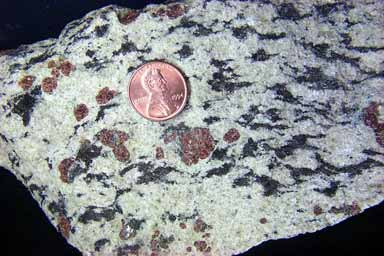

*Final notes about minerals* Quartz varieties are difficult, quartz can be found in volcanic, metamorphic, sedimentary, and intrusive igneous settings. If you are writing about agate specifically it is almost always volcanic in nature.
Diamonds are found in volcanic ash deposits called kimberlites, these deposits can occur in any rock type, so while they are igneous, they can be found anywhere. They have zero connection to the surrounding rocks.
2. Fossil Fuels
If a region is producing oil or coal, it is going to be from a sedimentary environment that is very rich in ancient plant material (like millions of years old). A unique feature of these locations would be finding lots of plant fossils, and rocks that can be found in association with these would be sandstone, shale, conglomerates/breccias, and limestones. Sedimentary rocks form in layers, so if exposed the layers will be very visible from a distance. You can also get unique features due to preferential weathering (fancy way of saying some rocks are harder than others, so when exposed to the same weather some rocks will break down faster than others). Also, natural oil seeps are a thing in places where natural oil is prevalent, but I couldn't find a good picture sorry.

3. Building Resources
based on the rocks found in each region, the buildings will be made out of different materials, so lets breakdown what building materials would be used based off what rocks are present in the location.
Sedimentary rocks- lots of options here, so I will just info dump. If the region is drier, limestone is a good choice, historically may desert areas use limestone, it is soft and easy to carve, but it will dissolve slowly with rain. Sandstone is a durable rock that can be used, but it is very hard as it is made of quartz. Clay! shale breaks down in humid environments and will often make clay, this is a great, amazing building resource that could drive economy.
Metamorphic rocks- Marble.... if you want to make luxurious marble temples, metamorphic rocks are a must! Other comments, metamorphic rocks will often have layers of weaker minerals and stronger minerals, that means they will break along a defined surface. A lot of older houses in the Italian Alps (Aosta Valley) use these rocks for roofing. Slate roofing is also common in a lot of places, slate is formed from really low grade metamorphism, so this resource can be available in both sedimentary and metamorphic locations within reason.

Igneous- Granite (light) and Gabbro (dark) is very hard and therefore it is used frequently in countertops today. This is also important because these rocks will take a high shine from polishing. Igneous rocks are also perfect for making cement! Volcanic ash mixed with quicklime and salt water is the recipe for roman concrete which is arguable much better than current day concrete but otherwise doesn't offer much more benefit.

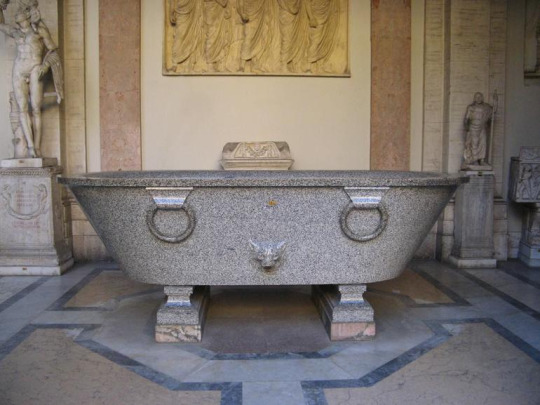
Thank you if you made it this far, I want to make more guides in the future to hopefully cover more geology topics that can influence a story (possibly natural disasters and associated landscape features for subtle foreshadowinggggg)
This guide is very simplified! It is supposed to cover a lot of information for people who may not know a lot about geology, but are interesting in creating fictional universes! If you know a lot about geology already, please avert your eyes, or comment something additional!
565 notes
·
View notes